Blog > 10 creative Ideas for your Title- and End-Slides in Presentations

10 creative Ideas for your Title- and End-Slides in Presentations
11.13.19 • #powerpointtips #presentation.
Of all the slides in a PowerPoint presentation, the ones that are without a doubt the most important ones are the first and the last one. It makes perfect sense – the title slide sets the general tone. Make it boring and you’ll loose your audience’s attention within the first few minutes. If you’re making it exciting and innovative on the other hand, you’re taking a big step towards giving an amazing presentation and having an engaged audience. It is very similar with the final slide. It will be the one that people are going to remember most, the one that is supposed to make people leave the room thinking ‘Wow! What a great presentation!’ A bad ending could even mess up what would otherwise be a good performance overall (just think of a good TV show with a bad ending…).
The most common mistakes for title and final slides
If you asked 100 people what belongs on your PowerPoint’s title slide, the majority would answer ‘The title, maybe a subtitle, the presenter’s name and company, the date’. That kind of title slide is alright, but you usually say all of these things in the beginning of a presentation anyway. Also, it is very likely that most of your attendees know these things – they usually signed up for it after all. So what’s the point in listing all of that information on your title slide, when you could also use it for making a stunning first impression? Not only the title slide is commonly designed in an uncreative and conventional way. Too often, you can see PowerPoint presentations ending with the ‘Any Questions?’ or even worse – the ‘Thank you for your attention’ slide. ‘Thank you for your attention’ is a set phrase that has been said so many times it can’t possibly be delivered in an authentic way anymore. Therefore, it’s better to think of something else for your grand final. Finding an unconventional ending that suits your presentation style makes you seem much more charismatic and authentic than using an empty phrase.
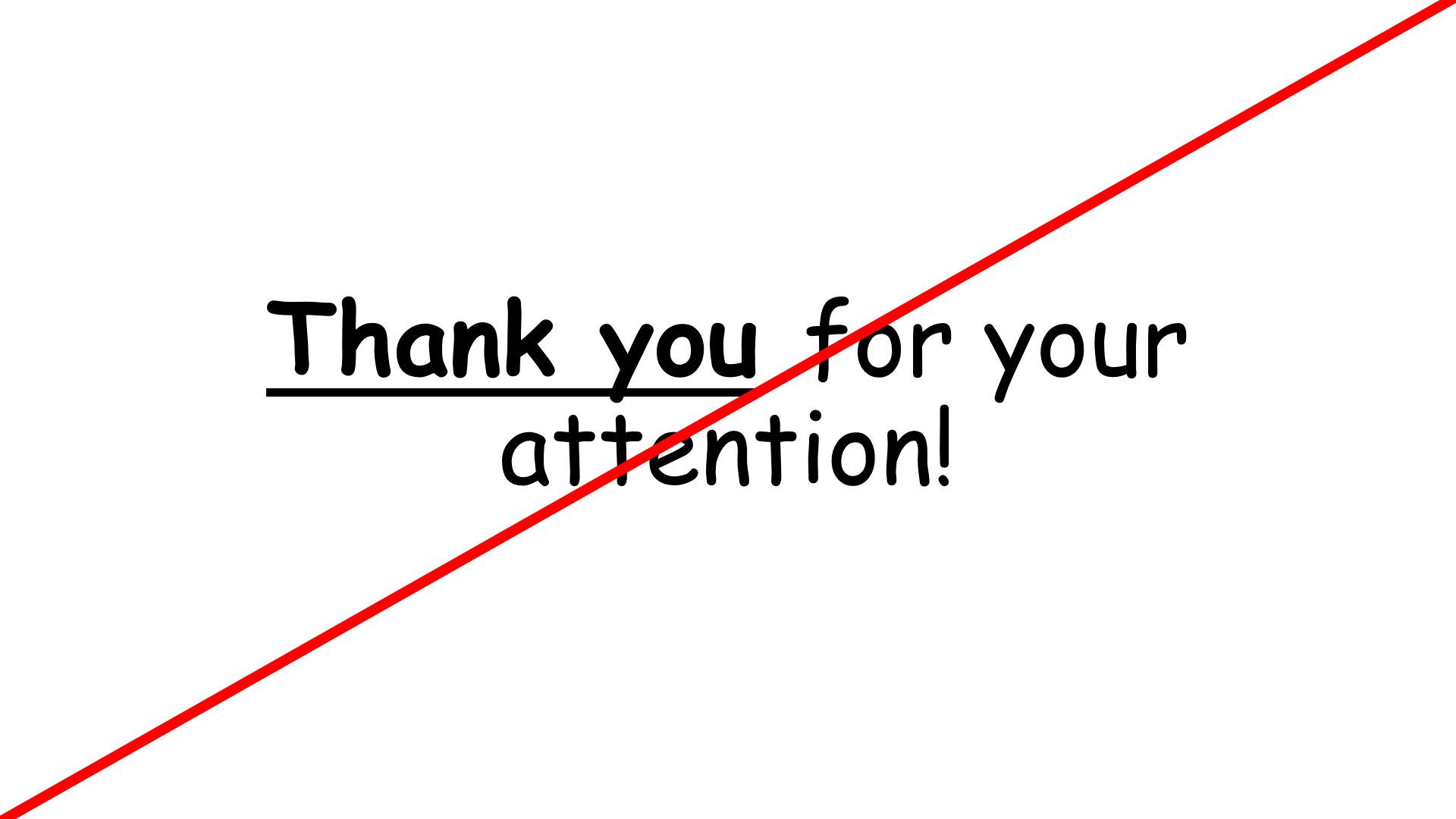
1. An inspiring quote
An inspiring quote on your slide is a perfect way to both start and finish your presentation. Well, it does not have to be inspiring. It could be any quote that is somehow connected to your presented topic. Just have fun looking through books and the internet to find interesting quotes that you want your audience to hear. Good pages to look at for inspiration are goodreads and brainyquotes.com .
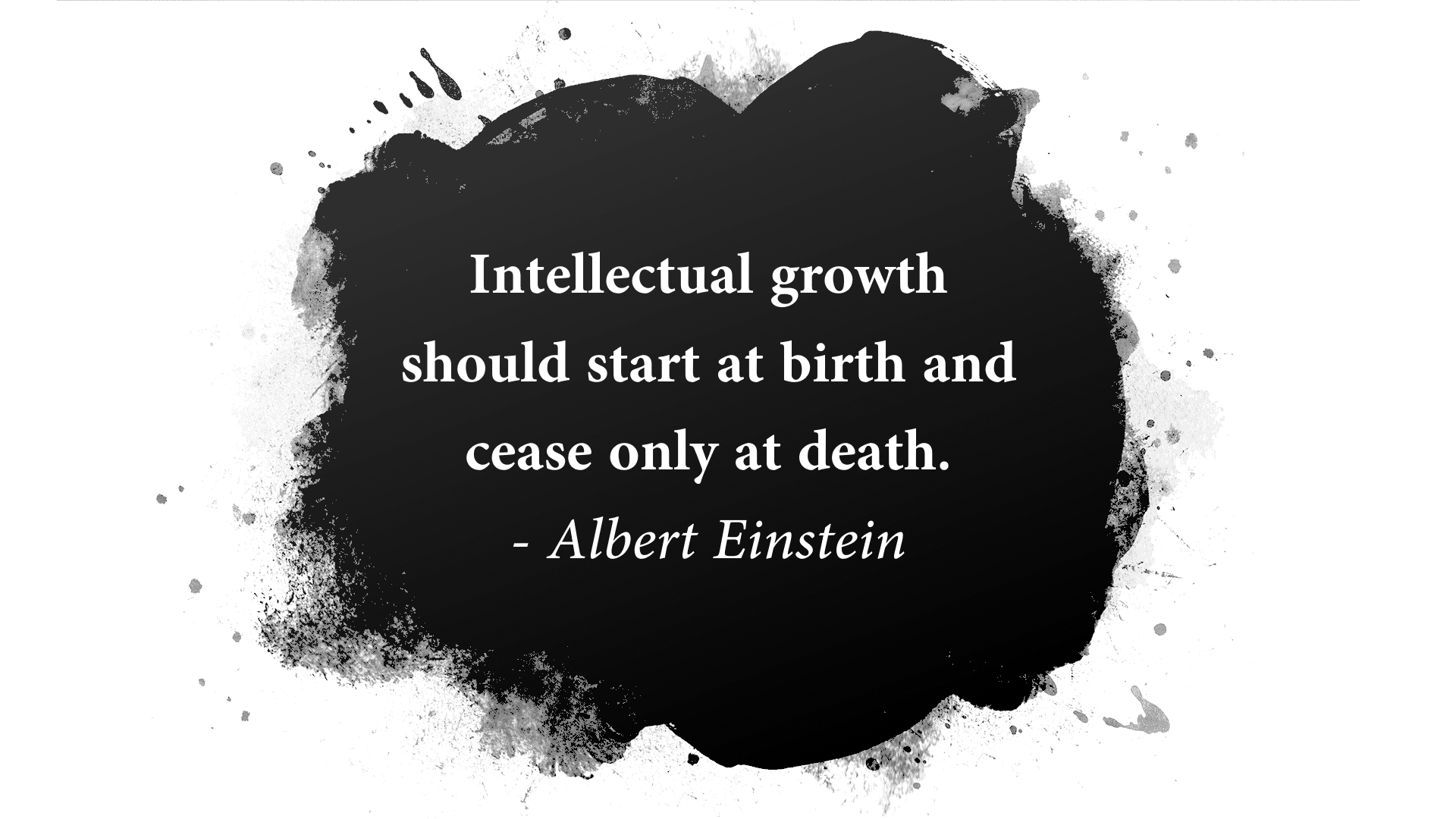
2. A blank slide
This might seem strange to some people, but a blank slide can be really powerful if you want to have your audience’s full attention. You can use the advantage of blank slides by incorporating them at the beginning, in the end or even in between your regular slides. You can either use a blank slide of your regular template (so there will still be some design elements on it) or go all in and make the slide completely black (or white).
3. A call to action
If the goal of your presentation is to really make your audience act in some kind of way, there is no better way to start – or better yet end your presentation than with a call to action. This can be literally anything from little trivial things like “Drink enough water during the presentation so your brain stays intact!” – which will lighten up the mood – to more serious calls like “Help reducing waste by recycling whenever possible!”.

4. A question
Usually, it is the audience that asks questions after a presentation. However, you can also turn that around and ask your attendees instead. However, it’s important to ask a question that can be answered easily and individually – the best questions involve previous experiences and personal opinions (asking about facts or questions that are hard to understand can often lead to silence and no one wanting to answer).
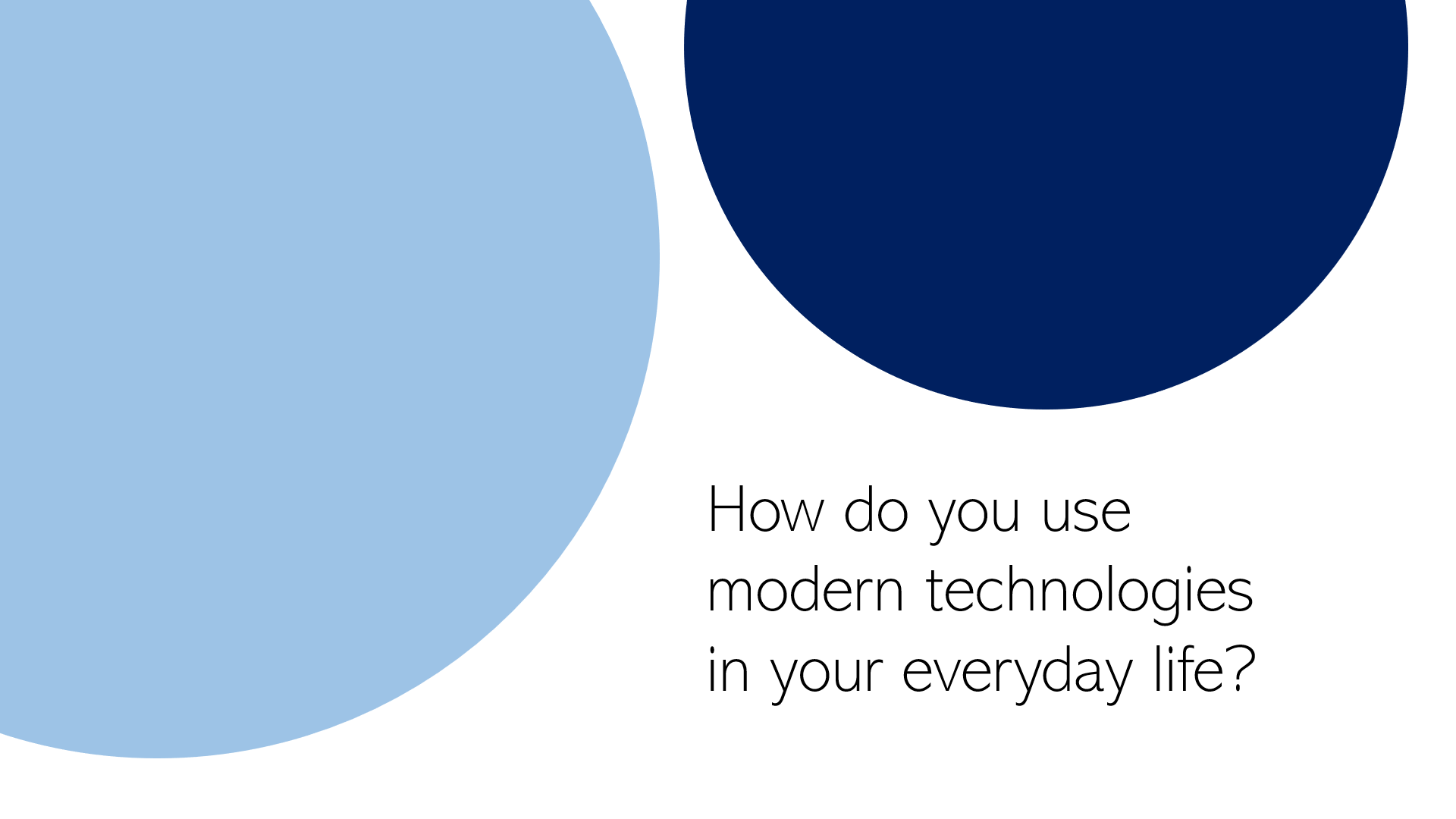
5. An interactive poll
Nothing engages the audience like a live poll. Conduct one right at the beginning to get everybody envolved, and/or wait until the end to get your audience’s opinion on something. Icebreaker polls are the perfect way to start, as they lighten the mood. You can easily create polls for free with interactive software tools such as SlideLizard .

6. A funny picture, meme, or quote
I’m pretty sure that every student nowadays has that teacher that just tries a little too hard to be cool by throwing in a meme on literally every single slide. That may be a bit too much. But just a little comedy at the beginning or in the end can make you seem very charismatic and entertaining and catch the attention of your listeners. Open (or close) with a joke, a funny picture or a quote – whichever you feel comfortable with. It is usually best if it has something to do with the topic you’re presenting.

7. An interesting fact
Catch the audience’s attention by putting an interesting fact concerning the topic on one of your slides – ideally at the beginning, but maybe also in the end (to keep up the audience’s interest even after the presentation is done).
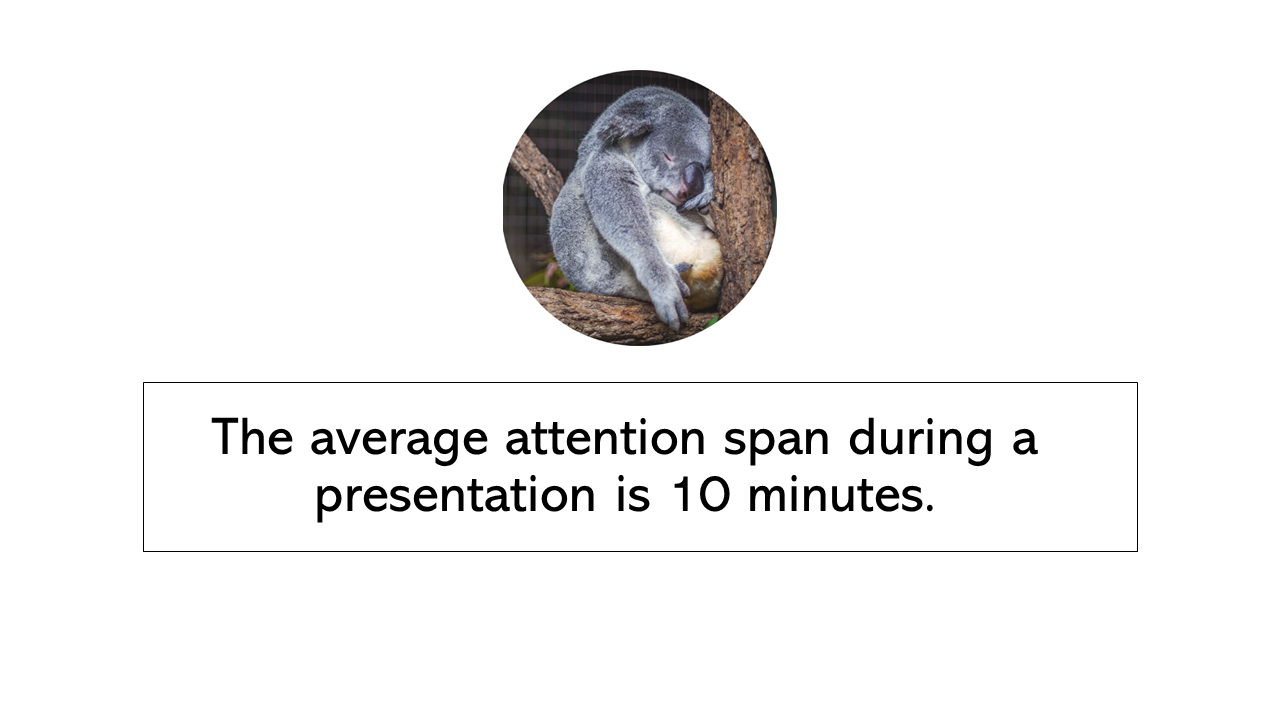
8. The title, but with a twist
If you feel like you need to put the presentations name/topic on the front slide, but still want that little creative twist, just change the title slightly. According to what I’m proposing, rather dull presentation titles like e.g. “Marine Biology – An Introduction to Organisms in the sea” can be transformed to “Marine Biology – Diving Deep” (or something less cheesy if you prefer). Make it either funny or over-the-top spectacular and catch the audience’s attention!

9. A bold statement, opinion, or piece of information
This is probably the best way to capture your audience from the beginning on. Start with a radical, crazy opinion or statement and then get your attendees hooked by telling them that during the presentation, they will learn why you’re right. It could be anything, really, as long as it goes well with your presented topic – from the statement “Everybody has the time to read 5 books a month” to “Going to college is a waste of time” or “The human species is not the most intelligent on earth” – Take whatever crazy, unpopular theory or opinion you have, throw it out there and (very important!) explain why you’re right. You’ll have your audience’s attention for sure and might even change some of their opinions about certain things.
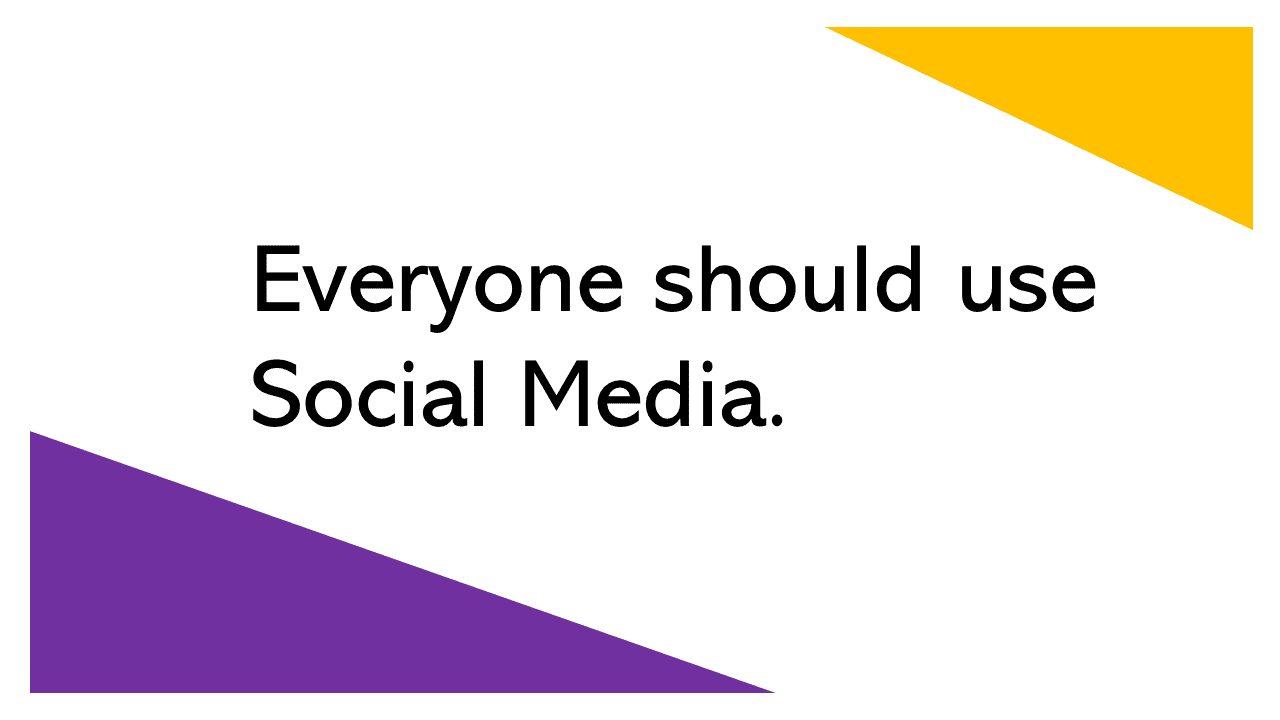
10. No title and end slide at all
Yes, that’s a possibility as well. If you absolutely can’t think of any creative or otherwise good way to start and end your presentation – even after reading the tips mentioned above – then simply don’t. That’s right - no title and end slide at all. You can pull that of by simply introducing yourself in the beginning, then getting right into the topic (which makes a good impression, long introductions are usually rather tedious) and when you’re at your last slide just saying a simple ‘Goodbye, thank you and feel free to ask questions’.
Related articles
About the author.

Pia Lehner-Mittermaier
Pia works in Marketing as a graphic designer and writer at SlideLizard. She uses her vivid imagination and creativity to produce good content.
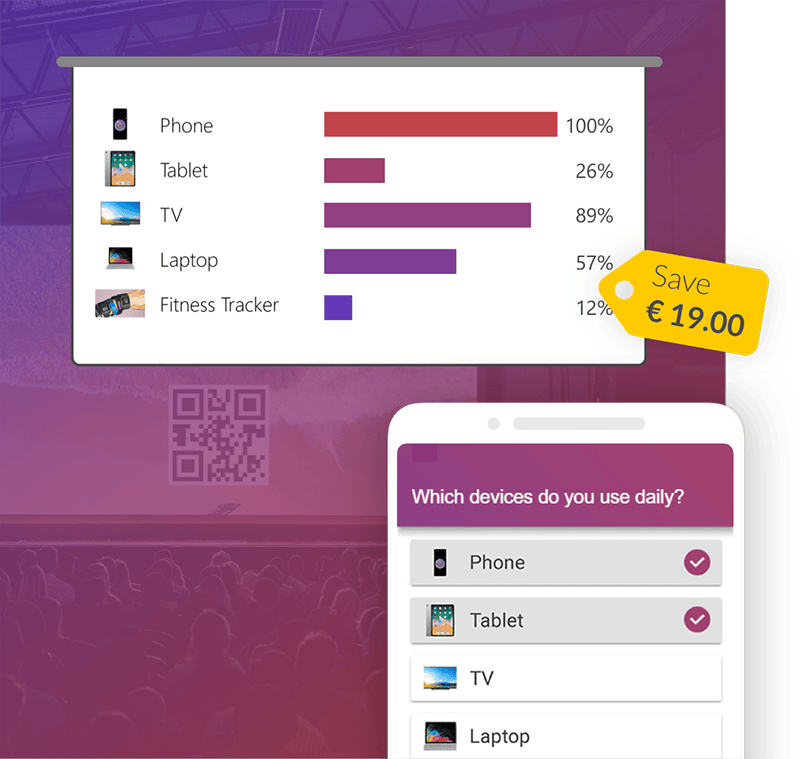
Get 1 Month for free!
Do you want to make your presentations more interactive.
With SlideLizard you can engage your audience with live polls, questions and feedback . Directly within your PowerPoint Presentation. Learn more

Top blog articles More posts

Quiz Ideas for your Presentation

Create social media graphics in PowerPoint
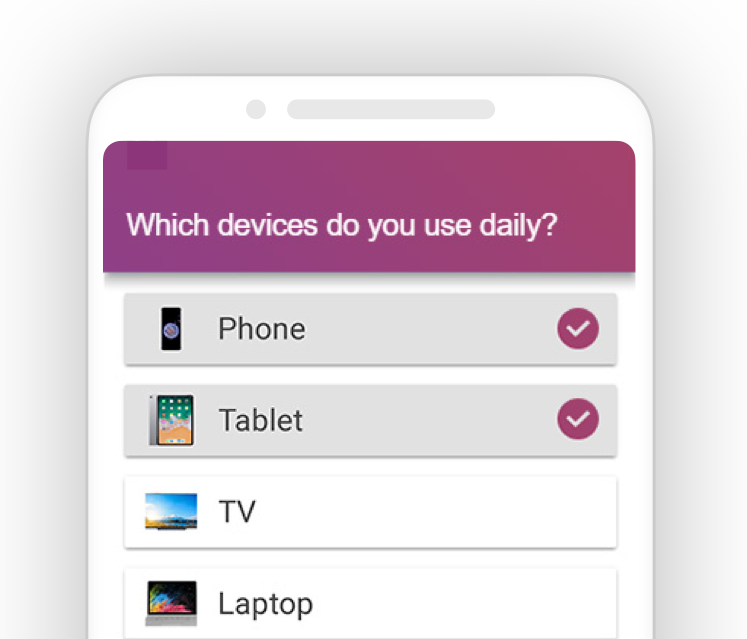
Get started with Live Polls, Q&A and slides
for your PowerPoint Presentations
The big SlideLizard presentation glossary
Informative presentations.
An information presentation is created when no solution is currently available. Facts, data and figures or study results are presented and current processes are described.
Learning Management System (LMS)
Learning Management Systems (LMS) are online platforms that provide learning resources and support the organisation of learning processes.
Effect Options
In the effect options in PowerPoint, further details can be specified for the selected effect.
Closed Questions
Closed questions are followed by a short, clear answer. There are several answer options from which you can choose one or more.
Be the first to know!
The latest SlideLizard news, articles, and resources, sent straight to your inbox.
- or follow us on -
We use cookies to personalize content and analyze traffic to our website. You can choose to accept only cookies that are necessary for the website to function or to also allow tracking cookies. For more information, please see our privacy policy .
Cookie Settings
Necessary cookies are required for the proper functioning of the website. These cookies ensure basic functionalities and security features of the website.
Analytical cookies are used to understand how visitors interact with the website. These cookies help provide information about the number of visitors, etc.
How to End a Presentation The Right Way (+ 3 Downloadable Creative PowerPoint Conclusion Slides)
Ausbert Generoso
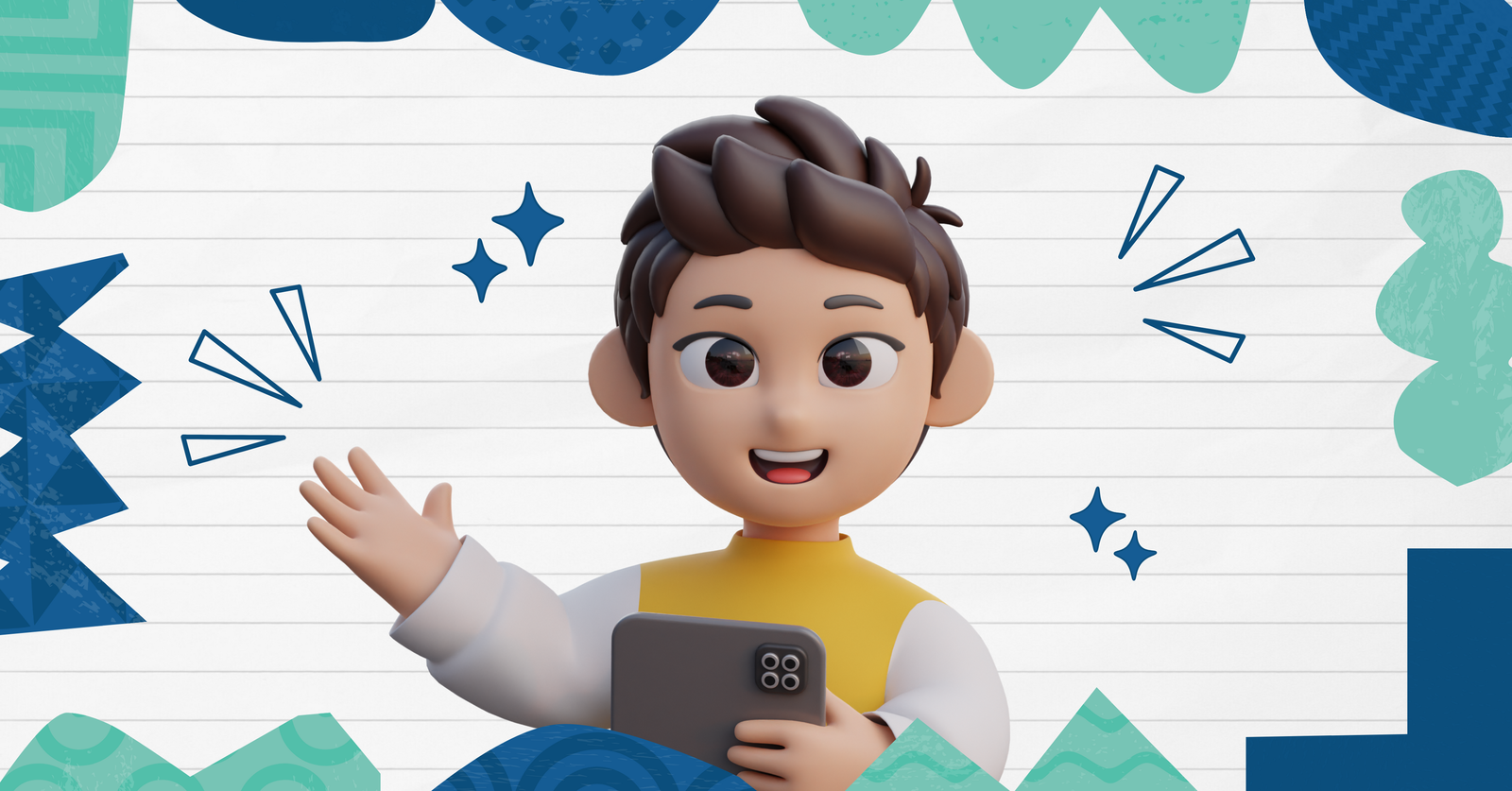
Ever been in a presentation that started strong but fizzled out at the end? It’s a common frustration. The conclusion is where your message either sticks or fades away.
But how often have you left a presentation wondering, “Was that it?” A lackluster ending can undermine the impact of an entire presentation. In the digital age, a strong conclusion isn’t just a courtesy; it’s your secret weapon to make your message unforgettable.
In this blog, we’re diving into the art of crafting a powerful ending, making sure your audience doesn’t just understand but gets inspired. Let’s explore the key on how to end a presentation in a way that lingers in your audience’s minds.
Table of Contents
Why having a good presentation conclusion matters.

Understanding why a conclusion is not merely a formality but a critical component is key to elevating your presentation game. Let’s delve into the pivotal reasons why a well-crafted conclusion matters:
🎉 Lasting Impression
The conclusion is the last note your audience hears, leaving a lasting impression. It shapes their overall perception and ensures they vividly remember your key points.
🔄 Message Reinforcement
Think of the conclusion as the reinforcement stage for your central message. It’s the last opportunity to drive home your main ideas, ensuring they are understood and internalized.
📝 Audience Takeaways
Summarizing key points in the conclusion acts as a guide, ensuring your audience remembers the essential elements of your presentation.
💬 Connection and Engagement
A well-crafted conclusion fosters engagement, connecting with your audience on a deeper level through thought-provoking questions, compelling quotes, or visual recaps.
🚀 Motivation for Action
If your presentation includes a call to action, the conclusion plants the seeds for motivation, encouraging your audience to become active participants.
🌟 Professionalism and Polishing
A strong conclusion adds professionalism, showcasing attention to detail and a commitment to delivering a comprehensive and impactful message.
6 Unique Techniques and Components to a Strong Conclusion
As we navigate the art of how to end a presentation, it becomes evident that a powerful and memorable conclusion is not merely the culmination of your words—it’s an experience carefully crafted to resonate with your audience. In this section, we explore key components that transcend the ordinary, turning your conclusion into a compelling finale that lingers in the minds of your listeners.
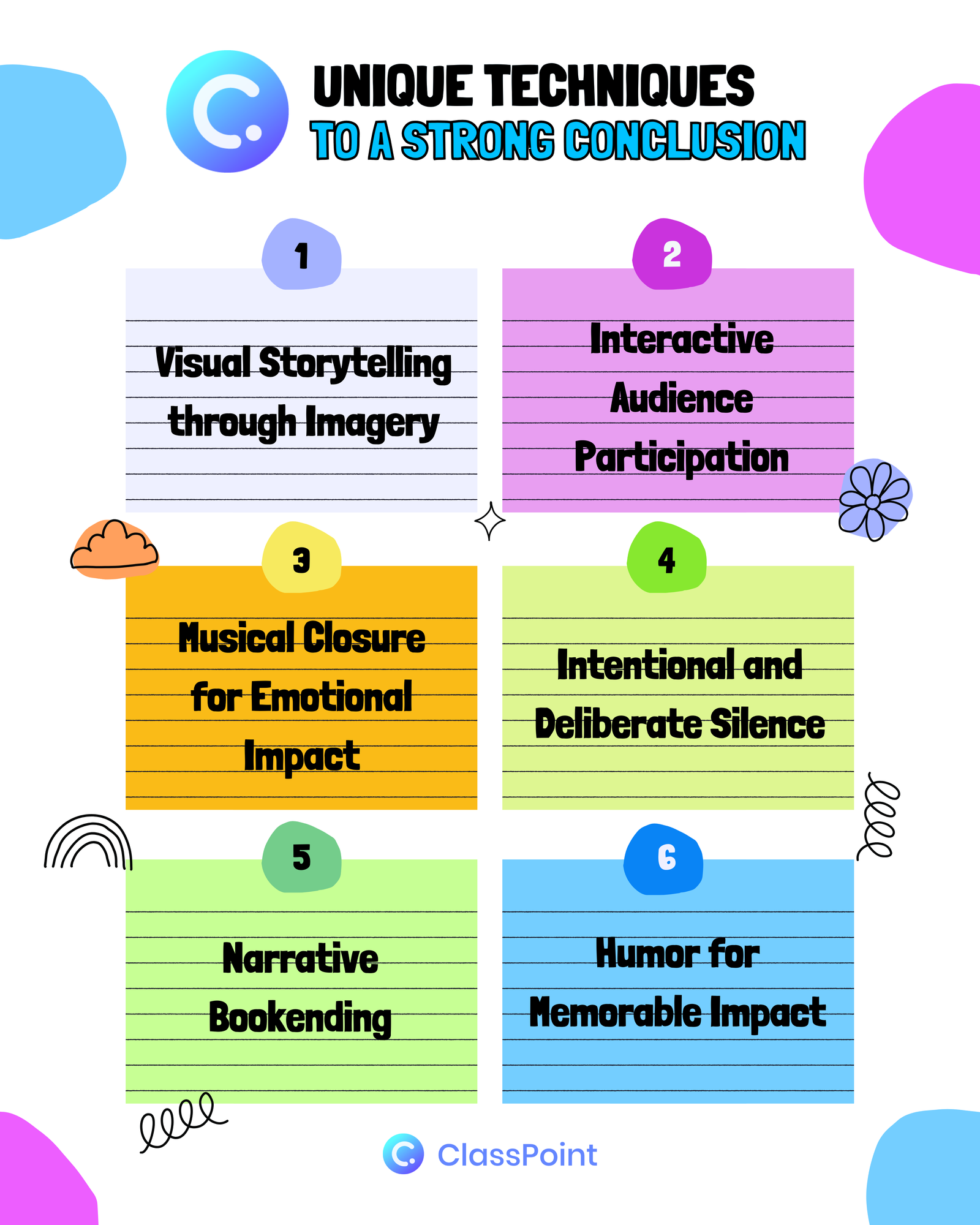
1. Visual Storytelling through Imagery
What it is: In the digital age, visuals carry immense power. Utilize compelling imagery in your conclusion to create a visual story that reinforces your main points. Whether it’s a metaphorical image, a powerful photograph, or an infographic summarizing key ideas, visuals can enhance the emotional impact of your conclusion.
How to do it: Select images that align with your presentation theme and evoke the desired emotions. Integrate these visuals into your conclusion, allowing them to speak volumes. Ensure consistency in style and tone with the rest of your presentation, creating a seamless visual narrative that resonates with your audience.
2. Interactive Audience Participation
What it is: Transform your conclusion into an interactive experience by engaging your audience directly. Pose a thought-provoking question or conduct a quick poll related to your presentation theme. This fosters active participation, making your conclusion more memorable and involving your audience on a deeper level.
How to do it: Craft a question that encourages reflection and discussion. Use audience response tools, if available, to collect real-time feedback. Alternatively, encourage a show of hands or open the floor for brief comments. This direct engagement not only reinforces your message but also creates a dynamic and memorable conclusion.
3. Musical Closure for Emotional Impact
What it is: Consider incorporating music into your conclusion to evoke emotions and enhance the overall impact. A carefully selected piece of music can complement your message, creating a powerful and memorable ending that resonates with your audience on a sensory level.
How to do it: Choose a piece of music that aligns with the tone and message of your presentation. Introduce the music at the right moment in your conclusion, allowing it to play during the final thoughts. Ensure that the volume is appropriate and that the music enhances, rather than distracts from, your message.
4. Intentional and Deliberate Silence
What it is: Sometimes, the most impactful way to conclude a presentation is through intentional silence. A brief pause after delivering your final words allows your audience to absorb and reflect on your message. This minimalist approach can create a sense of gravity and emphasis.
How to do it: Plan a deliberate pause after your last sentence or key point. Use this moment to make eye contact with your audience, allowing your message to sink in. The strategic use of silence can be particularly effective when followed by a strong closing statement or visual element.
5. Narrative Bookending
What it is: Create a sense of completeness by bookending your presentation. Reference a story, quote, or anecdote from the introduction, bringing your presentation full circle. This technique provides a satisfying narrative structure and reinforces your core message.
How to do it: Identify a story or element from your introduction that aligns with your conclusion. Reintroduce it with a fresh perspective, revealing its relevance to the journey you’ve taken your audience on. This technique not only creates coherence but also leaves a lasting impression.
6. Incorporating Humor for Memorable Impact
What it is: Humor can be a powerful tool in leaving a positive and memorable impression. Consider injecting a well-timed joke, light-hearted anecdote, or amusing visual element into your conclusion. Humor can create a sense of camaraderie and connection with your audience.
How to do it: Choose humor that aligns with your audience’s sensibilities and the overall tone of your presentation. Ensure it enhances, rather than detracts from, your message. A genuine and well-placed moment of humor can humanize your presentation and make your conclusion more relatable.
[Bonus] Creative Ways on How to End a Presentation Like a Pro
1. minimalist conclusion table design.
One of the many ways to (aesthetically) end your PowerPoint presentation is by having a straightforward and neat-looking table to sum up all the important points you want your audience to reflect on. Putting closing information in one slide can get heavy, especially if there’s too much text included – as to why it’s important to go minimal on the visual side whenever you want to present a group of text.
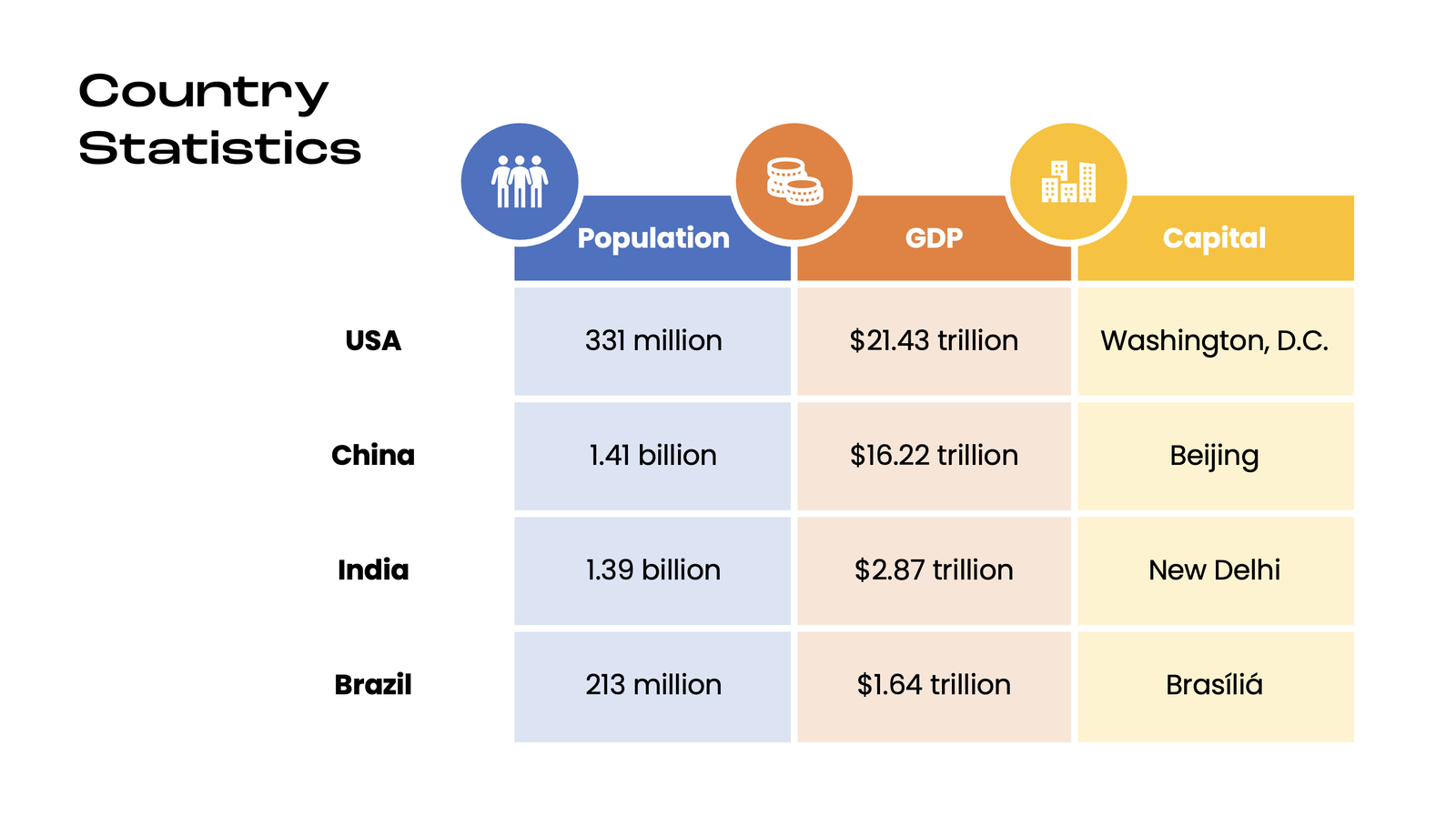
Here’s how you can easily do it:
- Insert a table. Depending on the number of points you want to reinforce, feel free to customize the number of rows & columns you might need. Then, proceed to fill the table with your content.
- Clear the fill for the first column of the table by selecting the entire column. Then, go to the Table Design tab on your PowerPoint ribbon, click on the Shading drop down, and select No Fill.
- Color the rest of the columns as preferred. Ideally, the heading column must be in a darker shade compared to the cells below.
- Insert circles at the top left of each heading column. Each circle should be colored the same as the heading. Then, put a weighted outline and make it white, or the same color as the background.
- Finally, put icons on top each circle that represent the columns. You may find free stock PowerPoint icons by going to Insert, then Icons.
2. Animated Closing Text
Ever considered closing a presentation with what seems to be a blank slide which will then be slowly filled with text in a rather captivating animation? Well, that’s sounds specific, yes! But, it’s time for you take this hack as your next go-to in ending your presentations!
Here’s how simple it is to do it:
- Go to Pixabay , and set your search for only videos. In this example, I searched for the keyword, ‘yellow ink’.
- Insert the downloaded video onto a blank PowerPoint slide. Then, go to the Playback tab on the PowerPoint ribbon. Set the video to start automatically, and tick the box for ‘Loop until stopped’. Then, cover it whole with a shape.
- Place your closing text on top of the shape. It could be a quote, an excerpt, or just a message that you want to end your PowerPoint presentation with.
- Select the shape, hold Shift, and select the text next. Then, go to Merge Shapes, and select Subtract.
- Color the shape white with no outline. And, you’re done!
3. Animated 3D Models
What quicker way is there than using PowerPoint’s built-in 3D models? And did you know they have an entire collection of animated 3D models to save you time in setting up countless animations? Use it as part of your presentation conclusion and keep your audience’ eyes hooked onto the screens.
Here’s how you can do it:
- Design a closing slide. In this example, I’m using a simple “Thank You” slide.
- Go to Insert, then click on the 3D Models dropdown, and select Stock 3D Models. Here, you can browse thru the ‘All Animated Models’ pack and find the right model for you
- Once your chosen model has been inserted, go to the Animations tab.
- In this example, I’m setting a Swing animation. Then, set the model to start with previous.
- For a final touch, go to Animation Pane. From the side panel, click on the Effect Options dropdown and tick the check box for Auto-reverse. Another would be the Timing dropdown, then select Until End of Slide down the Repeat dropdown.
Get a hold of these 3 bonus conclusion slides for free!
Expert Tips on How to End a Presentation With Impact
🔍 Clarity and Conciseness
Tip: Keep your conclusion clear and concise. Avoid introducing new information, and instead, focus on summarizing key points and reinforcing your main message. A concise conclusion ensures that your audience retains the essential takeaways without feeling overwhelmed.
⏩ Maintain a Strong Pace
Tip: Control the pacing of your conclusion. Maintain a steady rhythm to sustain audience engagement. Avoid rushing through key points or lingering too long on any single aspect. A well-paced conclusion keeps your audience focused and attentive until the very end.
🚀 Emphasize Key Takeaways
Tip: Clearly highlight the most critical takeaways from your presentation. Reinforce these key points in your conclusion to emphasize their significance. This ensures that your audience leaves with a firm grasp of the essential messages you aimed to convey.
🔄 Align with Your Introduction
Tip: Create a sense of cohesion by aligning your conclusion with elements introduced in the beginning. Reference a story, quote, or theme from your introduction, providing a satisfying narrative arc. This connection enhances the overall impact and resonance of your presentation.
🎭 Practice, but Embrace Flexibility
Tip: Practice your conclusion to ensure a confident delivery. However, be prepared to adapt based on audience reactions or unexpected changes. Embrace flexibility to address any unforeseen circumstances while maintaining the overall integrity of your conclusion.
📢 End with a Strong Call to Action (if applicable)
Tip: If your presentation includes a call to action, conclude with a compelling and actionable statement. Clearly communicate what you want your audience to do next and why. A strong call to action motivates your audience to take the desired steps.
🙏 Express Gratitude and Closure
Tip: Express gratitude to your audience for their time and attention. Provide a sense of closure by summarizing the journey you’ve taken together. A gracious and thoughtful conclusion leaves a positive final impression.
Final Thoughts
In wrapping up your presentation, the conclusion serves as the final touch, leaving a strong and lasting impression. Think of it as the last puzzle piece that completes the picture. Ensure your conclusion goes beyond a simple summary, using visuals and engagement to make it memorable. Express gratitude sincerely as you bring your talk to an end, acknowledging the shared experience and setting the stage for what follows.
In these closing moments, aim for more than just a conclusion; create a connection that lingers in the minds of your audience.
About Ausbert Generoso
Supercharge your powerpoint. start today..
800,000+ people like you use ClassPoint to boost student engagement in PowerPoint presentations.
10 Powerful Examples of How to End a Presentation
- By Illiya Vjestica
- - January 23, 2023
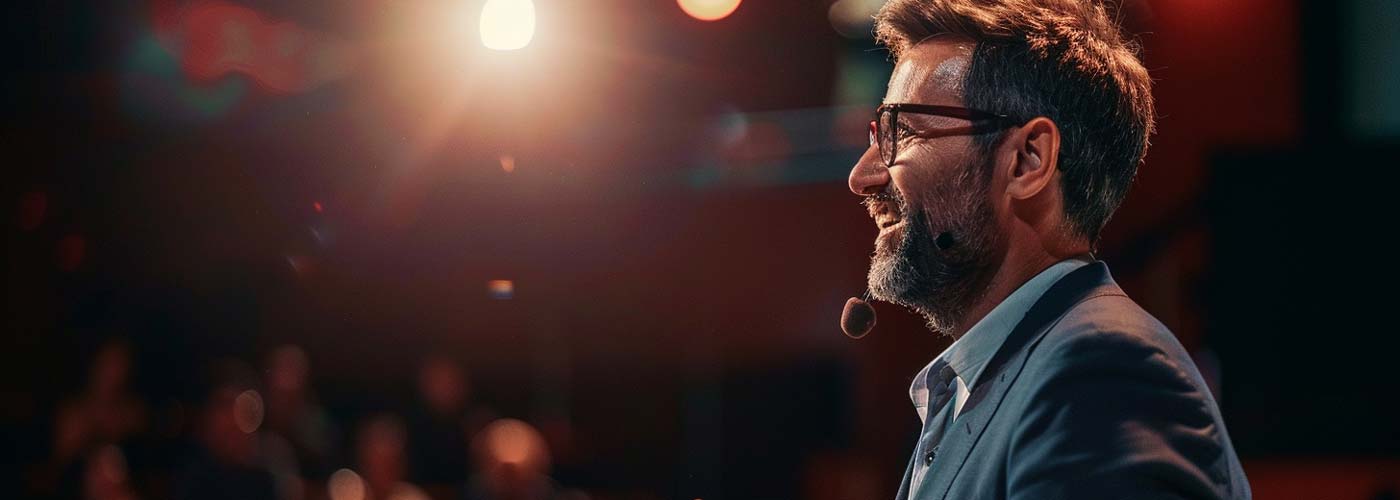
Here are 10 powerful examples of how to end a presentation that does not end with a thank you slide.
How many presentations have you seen that end with “Thank you for listening” or “Any questions?” I bet it’s a lot…
“Thank you for listening.” is the most common example. Unfortunately, when it comes to closing out your slides ending with “thank you” is the norm. We can create a better presentation ending by following these simple examples.
The two most essential slides of your deck are the ending and intro. An excellent presentation ending is critical to helping the audience to the next step or following a specific call to action.
There are many ways you can increase your presentation retention rate . The most critical steps are having a solid call to action at the end of your presentation and a powerful hook that draws your audience in.
What Action do You Want Your Audience to Take?
Before designing your presentation, start with this question – what message or action will you leave your audience with?
Are you looking to persuade, inspire, entertain or inform your audience? You can choose one or multiple words to describe the intent of your presentation.
Think about the action words that best describe your presentation ending – what do you want them to do? Inspire, book, learn, understand, engage, donate, buy, book or schedule. These are a few examples.
If the goal of your presentation is to inspire, why not end with a powerful and inspiring quote ? Let words of wisdom be the spark that ignites an action within your audience.
Here are three ways to end your presentation:
- Call to Action – getting the audience to take a specific action or next step, for example, booking a call, signing up for an event or donating to your cause.
- Persuade – persuading your audience to think differently, try something new, undertake a challenge or join your movement or community.
- Summarise – A summary of the key points and information you want the audience to remember. If you decide to summarise your talk at the end, keep it to no more than three main points.
10 Examples of How to End a Presentation
1. Asking your audience to take action or make a pledge.
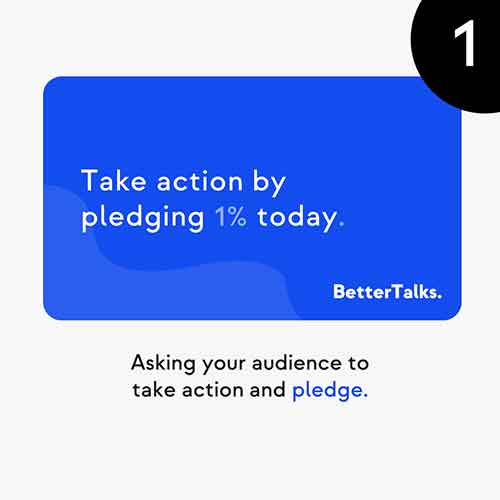
Here were asking the audience to take action by using the wording “take action” in our copy. This call to action is a pledge to donate. A clear message like this can be helpful for charities and non-profits looking to raise funding for their campaign or cause.
2. Encourage your audience to take a specific action, e.g. joining your cause or community
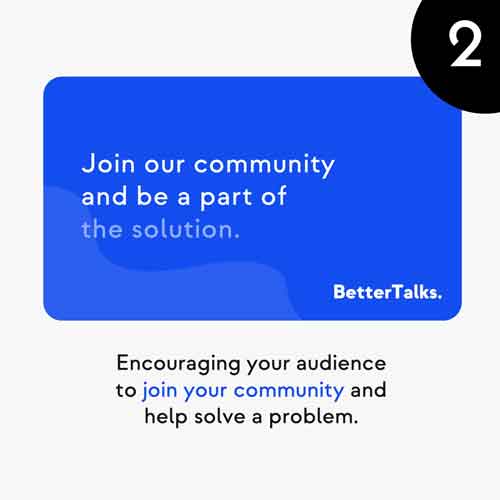
Here was are asking the audience to join our community and help solve a problem by becoming part of the solution. It’s a simple call to action. You can pass the touch to your audience and ask them to take the next lead.
3. Highlight the critical points for your audience to remember.

Rember, to summarise your presentation into no more than three key points. This is important because the human brain struggles to remember more than three pieces of information simultaneously. We call this the “Rule of Three”.
4. If you are trying to get more leads or sales end with a call to action to book a demo or schedule a call.
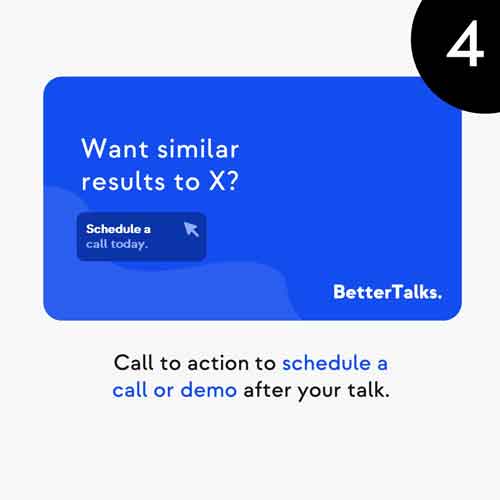
Can you inspire your audience to sign up for a demo or trial of your product? Structure your talk to lead your prospect through a journey of the results you generate for other clients. At the end of your deck, finish with a specific call to action, such as “Want similar results to X?”
Make sure you design a button, or graphic your prospect can click on when you send them the PDF version of the slides.
5. Challenge your audience to think differently or take action, e.g. what impact could they make?
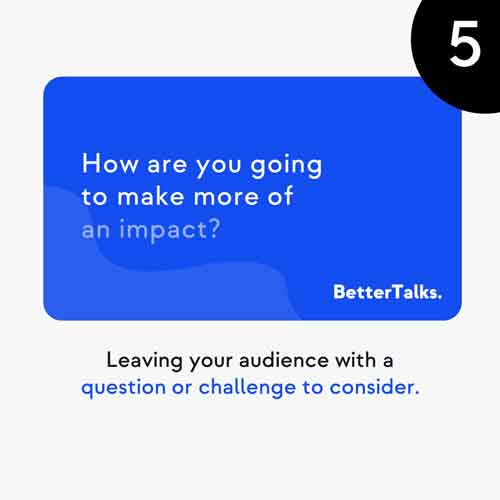
6. Give your audience actions to help share your message.
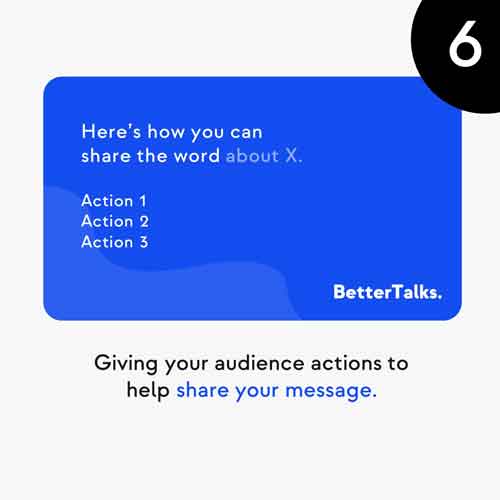
7. Promote your upcoming events or workshops
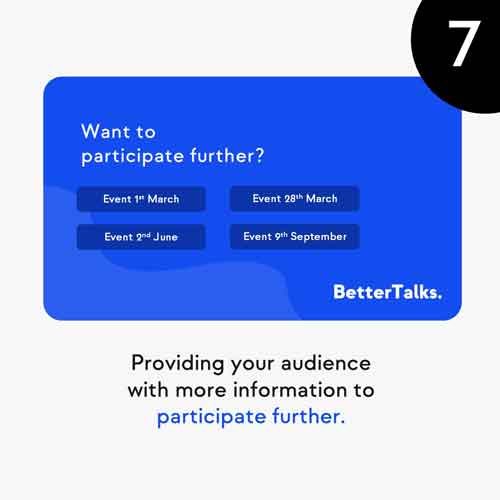
8. Asking your audience to become a volunteer.
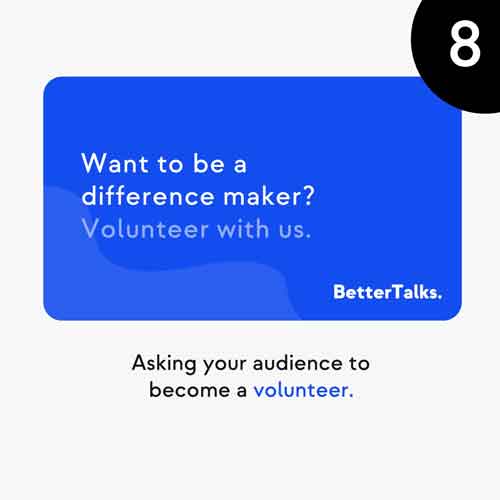
9. Direct your audience to learn more about your website.
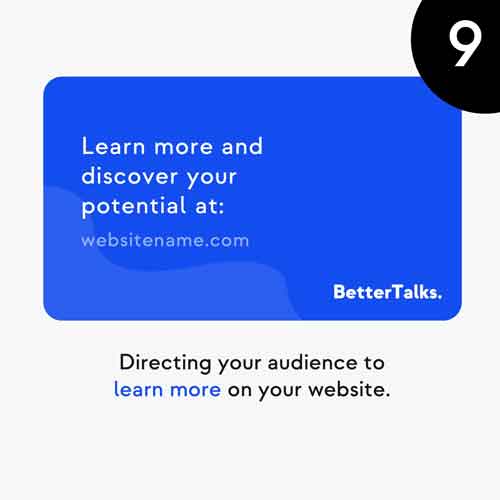
10. If you are a book author, encourage your audience to engage with your book.
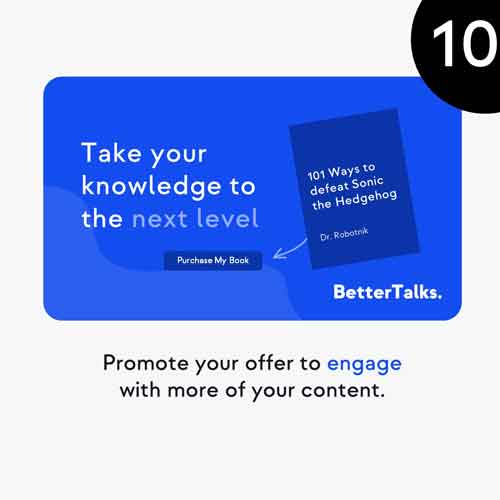
6 Questions to Generate an Ending for Your Presentation
You’ve told an engaging story, but why end your presentation without leaving your audience a clear message or call to action?
Here are six great questions you can ask yourself to generate an ending for your presentation or keynote talk.
- What impression would you want to leave your audience with?
- What is the big idea you want to leave them with?
- What action should they take next?
- What key point should you remember 72 hours after your presentation?
- What do you want them to feel?
- What is the key takeaway for them to understand?
What to Say After Ending a Presentation?
When you get to the end of a book, you don’t see the author say, “thank you for reading my last chapter.” Of course, there is no harm in thanking the audience after your presentation ends, but don’t make that the last words you speak.
Think of the ending of the presentation as the final chapter of an epic novel. It’s your chance to leave a lasting impression on the audience. Close with an impactful ending and leave them feeling empowered, invigorated and engaged.
- Leave a lasting impression.
- Think of it as the last chapter of a book.
- Conclude with a thought or question.
- Leave the audience with a specific action or next step.
How to End a Presentation with Style?
There are many great ways you can end your presentation with style. Are you ready to drop the mic?
Ensure your closing slide is punchy, has a clear headline, or uses a thought-provoking image.
You want to capture the audience’s attention before closing the presentation. Make sure the fonts you choose and are clear and easy to read. And What are the Best Colours for Your PowerPoint presentation? Use them wisely.
Do you need to consider adding a link? If you add links to your social media accounts, use icons and buttons to make them easy to see. Add a link to each button or icon. By doing this, if you send the PDF slides to people, they can follow the links to your various accounts.
What Should you Remember?
💡 If you take one thing away from this post, it’s to lose the traditional ending slides. Let’s move on from the “Thank you for your attention.” or “Any questions.” slides.
These don’t help you or the audience. Respect them and think about what they should do next. You may be interested to learn 3 Tactics to Free Your Presentation Style to help you connect to your audience.
Create stunning presentations with our templates, toolkits and guides.
Illiya Vjestica
Share this post:, related posts.
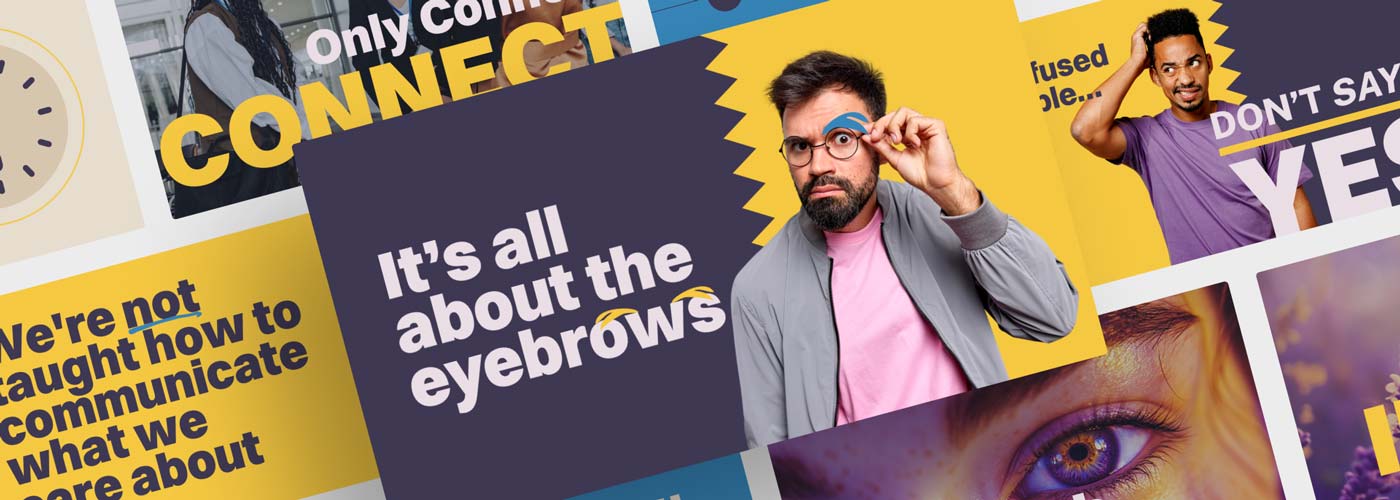
Make Your Slides Intriguing Like Author Sam Horn

7 Surprising Benefits of Using Google Slides
Leave a comment cancel reply.
Your email address will not be published. Required fields are marked *
We use cookies to enhance your experience. By continuing to visit this site, you agree to our use of cookies

10 Tips On How To End A Presentation [Examples + Templates]
Everyone agrees that the beginning of a presentation is crucial as it catches your audience’s attention and keeps them engaged, but what about the ending? The end of a presentation is as important as the start, which leaves a strong impression! A strong conclusion can transform a good presentation into a memorable one, but how do you end a presentation? That is exactly what this blog is going to help you with. In this blog, you will learn tips on how to end a presentation, a few common mistakes to avoid, and a lot more! So, what is the wait? Let’s dive in!
Why Is It Important To Have A Conclusion Slide In Your Presentation?
A conclusion is where, as a presenter, you have the opportunity to hammer the nail on its head and leave a memorable impression. But that is not all a conclusion should do; according to Business Communication: Process and Product should achieve three goals:
1. Summarize the main points of the slideshow. 2. Leaves the audience with a key takeaway. 3. Includes a statement that allows you to leave or pass on the mic.
A good conclusion is like the perfect punchline to a good joke; hence, you need to create a solid conclusion that drives your message home and everyone remembers it.
10 Tips On How To Conclude A Presentation
Now, let’s get onto the part that you have been waiting for! It’s time to discover the various tips on how to wrap up a presentation; these tips will not only help you craft a strong conclusion but also will help you learn various methods of delivering your conclusion!
1. Summarize key points
You have company if you struggle to remember what to say at the end of a presentation. Most people do not realize that an overall content summary is often the most fundamental part of an ending. One of the best ways to end a presentation is by summarizing 3-4 major points from your slideshow. This allows you to ensure that everyone present remembers these few points and their context and walks out with the message.
2. End on a Strong Note
While a summary ensures that your audience knows the key highlights of your presentation, it is equally important that your presentation stays memorable. An essential point on how to end and conclude your presentation is by giving it the conclusion it deserves. As the introduction mentions, an audience will often try to remember information by attempting to recall the beginning or end, so try to make the end memorable and even more important in the context of your entire presentation.
Example: If you started with a personal anecdote, revisit it and show how your presentation has provided the solution or insight.
3. Add a Call To Action

A CTA gives the audience something to do after the presentation. This could be as simple as visiting a social media page, signing up on a website, contacting the presenter for anything related to the presentation, or following up on a future presentation or event. This makes the audience an active part of your presentation rather than passive listeners and makes them feel included and involved, where they are participants rather than mere spectators.
4. Ask questions that make your audience think
Ask a rhetorical, thought-provoking question for which your audience must think back to your presentation for answers. Another way of doing this is by presenting your question at the beginning of the presentation and circling back to it by introducing the audience with enough information to answer it after the ending slide of the presentation. This allows you to make your presentation more interactive and helps you retain your audience’s attention.
5. Have brief answers ready
When you think of how to close a presentation, being ready with brief answers to questions that you might ask is the best way! Sometimes, less is more when facing a question at the end of your presentation. This means that you try to keep your answers as short and crisp as possible, as it shows how well-versed you are with the information and to keep your audience’s interest piqued. Practice on questions you have thought about to give you someplace to start and think about how the audience will receive the answers to prepare accordingly.
6. End with a quote

Another great way on how to end a PowerPoint presentation is by using quotes. When talking about quotes, we don’t mean the typical, overused “words of wisdom” you see in every presentation. To go out on a strong note, quote someone relatable or relevant to the context of your presentation; keep the quote as relatable as possible. Don’t go out of your way to find overly philosophical sayings that go over your audience’s head; instead, find something that gives your presentation a conclusion that speaks for itself.
7. Tell a story
One of the best ways to end a presentation is to take the audience on a narrative journey and bring it full circle to relate it to something you said in the beginning. This could be as easy as answering a question you laid out at the beginning of a simple quote that relates to the situation after the end of the presentation. This makes it seem like you have rehearsed and planned a complete conclusive presentation, which helps your reputation as a presenter.
8. Use strong visuals
We are all familiar with the phrase “a picture is worth a thousand words,” which means that an image can strike a chord with the audience in a way that words simply cannot. Use vibrant colors and themes, maintain an aesthetic, and include background images and other elements to improve the quality of your presentations and make them more memorable with your audience. They are more likely to remember and recall a visual presentation rather than a boring, text-heavy presentation slide, making it a great method when you think about how to conclude a presentation.
9. Ask for feedback
One of the best ways to conclude a presentation is by asking for feedback from your audience right after thanking them. So, how can you ask them for feedback? It is pretty simple; all you have to do is ask everyone to share their thoughts about the presentation through a series of Q&A sessions, or you can approach people individually after the presentation. When you conclude a presentation by asking for feedback, it shows that you truly value their time and input as well, and it even helps you grow!
10. Use a conclusion slide
The last tip on how to end a presentation has to be to use a conclusion slide. Many people use a thank you slide, but those slides hardly help close a slideshow. You can end a presentation by saying ‘Thank You,’ but it won’t have the same effect as having a conclusion that summarizes everything. A good conclusion helps you deliver the message you have been conveying throughout the presentation.
Common Mistakes To Avoid When Ending A Presentation
Now that you know how to conclude a PowerPoint presentation, you should also be aware of a few mistakes you can make when creating a conclusion for your presentations.
1. Being overly lengthy
It is best if you keep it brief as a presenter. The last thing an audience wants to hear in a conclusion is a detailed overview of what they just went over. Limit yourself to just the key takeaways rather than a story similar to what has already been presented to ensure an audience listens to you rather than tuning themselves out.
2. Not having a precise meaning
Ending a presentation can quickly become very awkward if you have not prepared how to close a presentation as it transitions into an abrupt silence or unplanned conversation. Be sure to include a definite ending to your presentation so that there is no confusion between you and the audience, letting them know you have concluded your presentation.
3. Not thanking your audience and team

One of the last things you do as a presenter is thank all parties involved for all their contributions. This begins with thanking team members – those who compiled the slideshow, those who went through the efforts to find the relevant data and information, and those who are direct team members. This is an easy and efficient way to acknowledge those who have been involved with a project and give them the credit that they deserve for the work that they have put in.
Finally, thank the audience for their time, patience, efforts, and respect to ensure they feel seen and understood at the end of the presentation. This is an etiquette for appreciating them and their participation. To add to your visuals, add a Thank You slide after your conclusion that encompasses your brand identity. Interestingly, you can combine it with the Contact Us page to make it more streamlined and include all vital information in a single slide.
How To End A Presentation Slides And Examples
If you are curious about what a good conclusion slide looks like, you can take a look at a few of SlideUpLift’s conclusion PowerPoint templates . These templates work as an inspiration and can be used directly in your presentation as well, as they are 100% customizable, allowing you to make the template into your slide.

Now that you know how to end a presentation like a pro, it is time for you to start creating slideshows that have conclusions that achieve all three goals a conclusion should. While knowing how to end a presentation, it is also great to learn how to create a title slide that will captivate your audience. So, get out there and create stunning presentations that portray everything you want!
How do you end a presentation?
To begin wrapping up your presentation, start by providing a summary of the presentation and key points, and follow that up with one of the CTA, Quotes, or Questions. Anticipate what the audience may ask, and provide contact details that will let the audience reach out to you. Finally, thank the audience and your team for all their efforts and time.
Should I end a presentation with a joke?
Ending a presentation with a joke is a very situational instance where you can afford to make a joke casually and informally with your peers. However, jokes may backfire with executives and team leaders in a more formal setting.
How can I make my presentation conclusion more memorable?
Using a quote or statistic, you can make your presentation conclusion more memorable. You can also tell a relatable story or anecdote while asking a thought-provoking question. Additionally, add visual elements to incorporate the message you are sending.
What do you say at the end of a presentation?
A few common phrases that you can say at the end of a presentation include:
- Thank you for your time.
- I appreciate the opportunity to speak with you today.
- I’ll now answer any questions you have.
Table Of Content
Related presentations.

Thank You Slide Templates


End Slide Templates

Conclusion Slide Templates
Related posts from the same category.

22 Jul, 2024 | SlideUpLift
17 Tips On How To Write A Professional PowerPoint Presentation [+Templates]
Presentations are a fantastic tool for communicating vital information. Even though people think it's simple to put all your content together and make a presentation, arranging and preparing the template

31 Jul, 2024 | SlideUpLift
How To Introduce Yourself Professionally [Examples + Templates]
Are you tired of the same old, boring self-introductions? It's time to step into the spotlight and make a memorable entrance. Whether you're facing a panel of interviewers or a
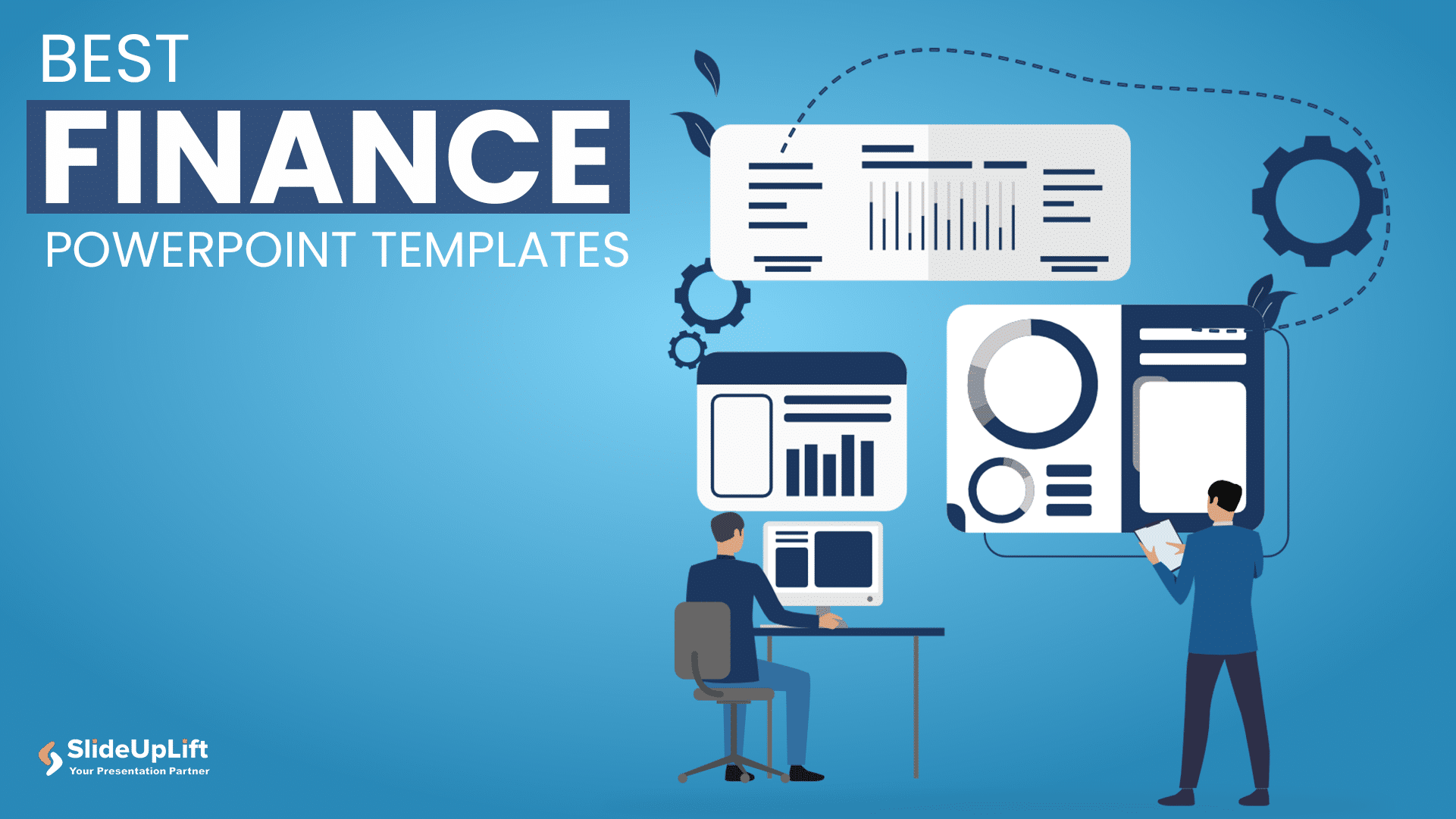
10 Best Financial Presentation Examples For PowerPoint
Presenting large data in a concise format in a presentation is just as important as it affects the efficiency of your business decision-making process. To make your work easy, we
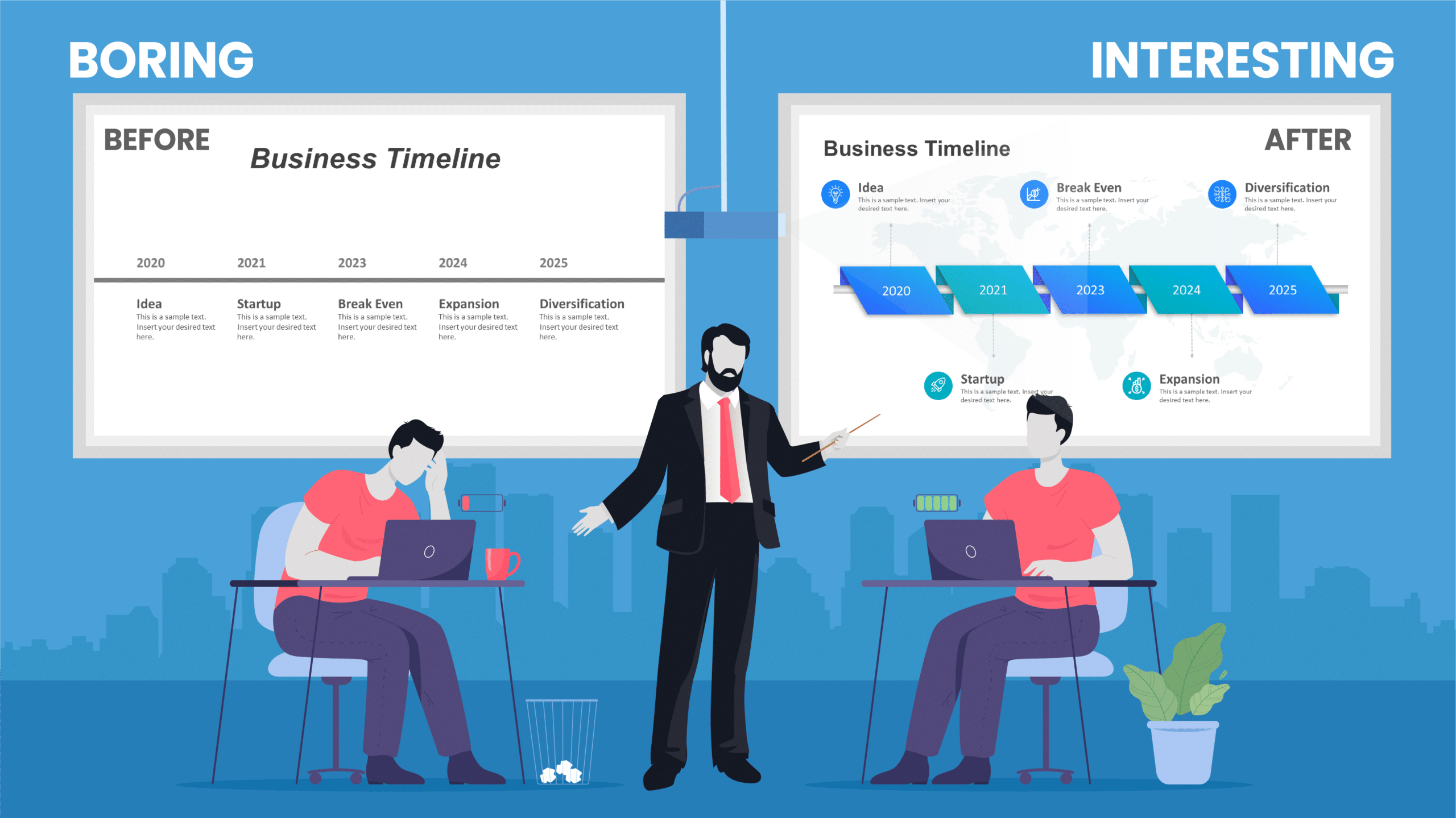
6 Jan, 2020 | SlideUpLift
Top 10 Hacks On How To Make PowerPoint Presentation Attractive
Per experts, the audience gets hooked and pays more attention to the visual content of your PowerPoint slides than drab-looking, text-heavy content. This article answers the well to know question

4 Oct, 2023 | SlideUpLift
The Best And Worst PowerPoint Presentation Examples
Engaging presentations are the lifeblood of effective communication in today's information-driven world. Whether you're in a boardroom pitching a new idea, standing in front of a classroom of curious learners,

23 Aug, 2024 | SlideUpLift
The Best PowerPoint Presentation Examples To Get Inspired By!
Engaging presentations are the secret sauce of effective communication. They bring life to your ideas and transform information into inspiration. They are the heartbeat of any memorable message, connecting with

22 Aug, 2024 | SlideUpLift
Best Professional Presentation Examples To Inspire You [+ Premium Templates]
It’s crucial for professionals to deliver outstanding and engaging presentations that convey essential information to their teams and stakeholders. Most professional PowerPoint themes are the backbone of corporate presentations and

27 Sep, 2023 | SlideUpLift
10 Bad PowerPoint Slides Examples to Avoid
A presentation serves two purposes: 1) it teaches your audience something new and 2) motivates them to take action. However, achieving these goals is only possible if your audience is

6 Jan, 2021 | SlideUpLift
How To Start a Presentation : Make A Strong First Impression
Presenting well requires preparation, and the first step is mastering the art of the opening statement. You may pique your audience's curiosity by crafting a captivating introduction to your presentation.

10 Nov, 2021 | SlideUpLift
PowerPoint Presentation Tips: How to Make a Good PowerPoint Presentation
A well-crafted PowerPoint presentation can have a lasting impact on your audience. However, creating an effective presentation can be daunting, especially if you are unsure how to make it engaging
Related Tags And Categories
Forgot Password?
Privacy Overview
Necessary cookies are absolutely essential for the website to function properly. This category only includes cookies that ensures basic functionalities and security features of the website. These cookies do not store any personal information
Any cookies that may not be particularly necessary for the website to function and is used specifically to collect user personal data via ads, other embedded contents are termed as non-necessary cookies. It is mandatory to procure user consent prior to running these cookies on your website.
We use essential cookies to make Venngage work. By clicking “Accept All Cookies”, you agree to the storing of cookies on your device to enhance site navigation, analyze site usage, and assist in our marketing efforts.
Manage Cookies
Cookies and similar technologies collect certain information about how you’re using our website. Some of them are essential, and without them you wouldn’t be able to use Venngage. But others are optional, and you get to choose whether we use them or not.
Strictly Necessary Cookies
These cookies are always on, as they’re essential for making Venngage work, and making it safe. Without these cookies, services you’ve asked for can’t be provided.
Show cookie providers
- Google Login
Functionality Cookies
These cookies help us provide enhanced functionality and personalisation, and remember your settings. They may be set by us or by third party providers.
Performance Cookies
These cookies help us analyze how many people are using Venngage, where they come from and how they're using it. If you opt out of these cookies, we can’t get feedback to make Venngage better for you and all our users.
- Google Analytics
Targeting Cookies
These cookies are set by our advertising partners to track your activity and show you relevant Venngage ads on other sites as you browse the internet.
- Google Tag Manager
- Infographics
- Daily Infographics
- Popular Templates
- Accessibility
- Graphic Design
- Graphs and Charts
- Data Visualization
- Human Resources
- Beginner Guides
Blog Marketing How To End A Presentation & Leave A Lasting Impression
How To End A Presentation & Leave A Lasting Impression
Written by: Krystle Wong Aug 09, 2023

So you’ve got an exciting presentation ready to wow your audience and you’re left with the final brushstroke — how to end your presentation with a bang.
Just as a captivating opening draws your audience in, creating a well-crafted presentation closing has the power to leave a profound and lasting impression that resonates long after the lights dim and the audience disperses.
In this article, I’ll walk you through the art of crafting an impactful conclusion that resonates with 10 effective techniques and ideas along with real-life examples to inspire your next presentation. Alternatively, you could always jump right into creating your slides by customizing our professionally designed presentation templates . They’re fully customizable and require no design experience at all!
Click to jump ahead:
Why is it important to have an impactful ending for your presentation?
10 effective presentation closing techniques to leave a lasting impression, 7 things to put on a conclusion slide.
- 5 real-life exceptional examples of how to end a presentation
6 mistakes to avoid in concluding a presentation
Faqs on how to end a presentation, how to create a memorable presentation with venngage.
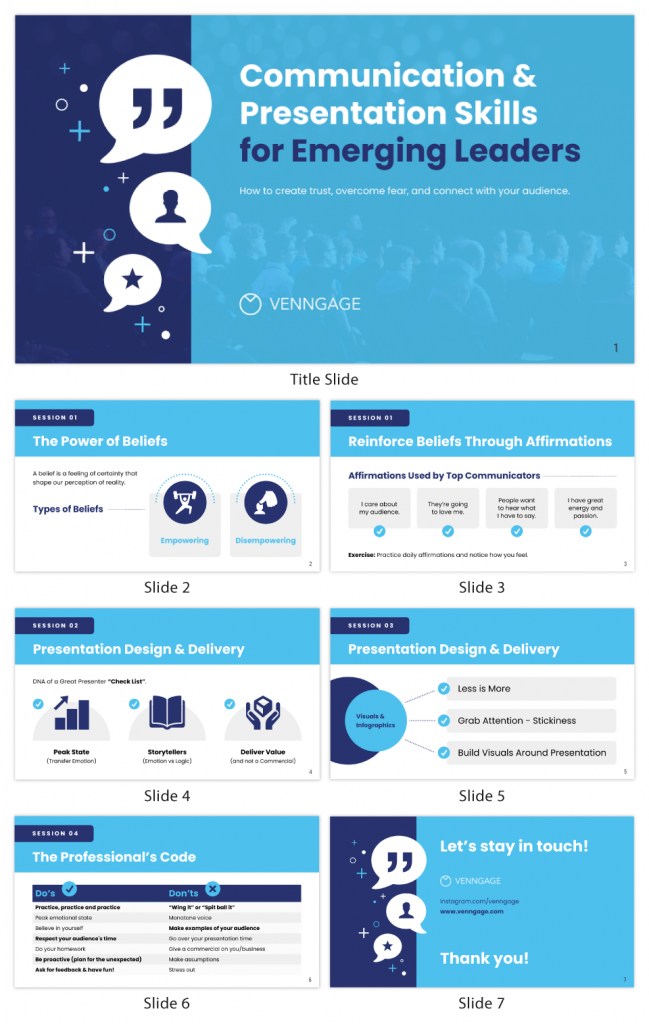
People tend to remember the beginning and end of a presentation more vividly than the middle, making the final moments your last chance to make a lasting impression.
An ending that leaves a lasting impact doesn’t merely mark the end of a presentation; it opens doors to further exploration. A strong conclusion is vital because it:
- Leaves a lasting impression on the audience.
- Reinforces key points and takeaways.
- Motivates action and implementation of ideas.
- Creates an emotional connection with the audience.
- Fosters engagement, curiosity and reflection.
Just like the final scene of a movie, your presentation’s ending has the potential to linger in your audience’s minds long after they’ve left the room. From summarizing key points to engaging the audience in unexpected ways, make a lasting impression with these 10 ways to end a presentation:
1. The summary
Wrap up your entire presentation with a concise and impactful summary, recapping the key points and main takeaways. By doing so, you reinforce the essential aspects and ensure the audience leaves with a crystal-clear understanding of your core message.
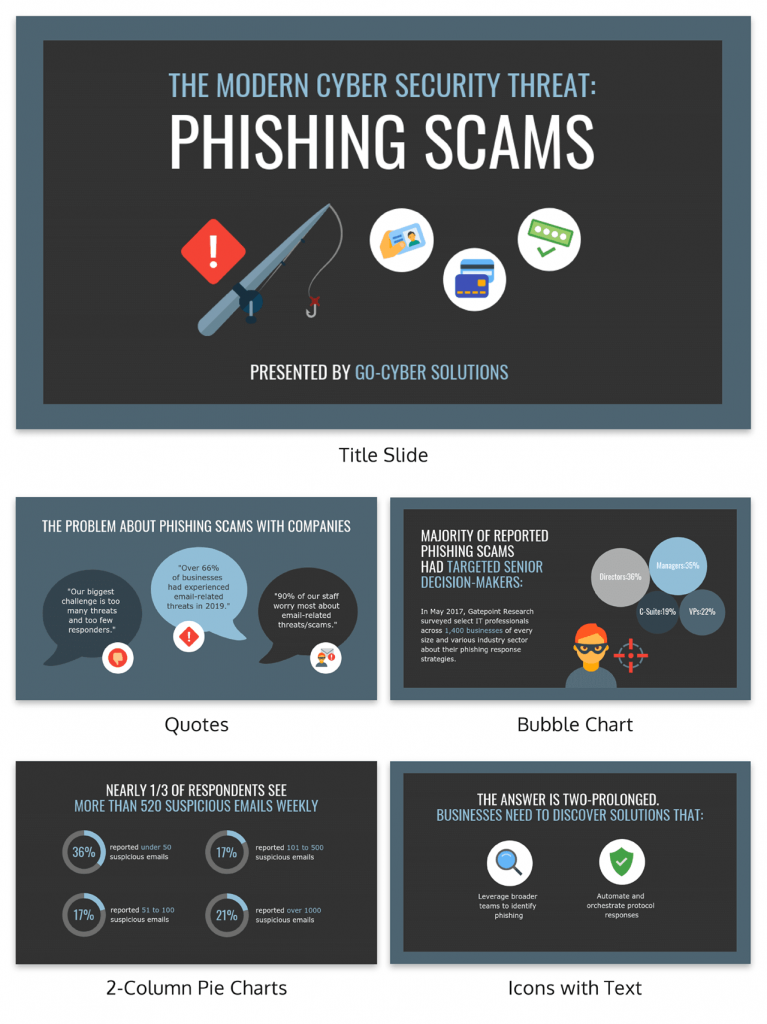
2. The reverse story
Here’s a cool one: start with the end result and then surprise the audience with the journey that led you to where you are. Share the challenges you conquered and the lessons you learned, making it a memorable and unique conclusion that drives home your key takeaways.
Alternatively, customize one of our cool presentation templates to capture the attention of your audience and deliver your message in an engaging and memorable way
3. The metaphorical prop
For an added visual touch, bring a symbolic prop that represents your message. Explain its significance in relation to your content, leaving the audience with a tangible and unforgettable visual representation that reinforces your key concepts.
4. The audience engagement challenge
Get the audience involved by throwing them a challenge related to your informational presentation. Encourage active participation and promise to share the results later, fostering their involvement and motivating them to take action.
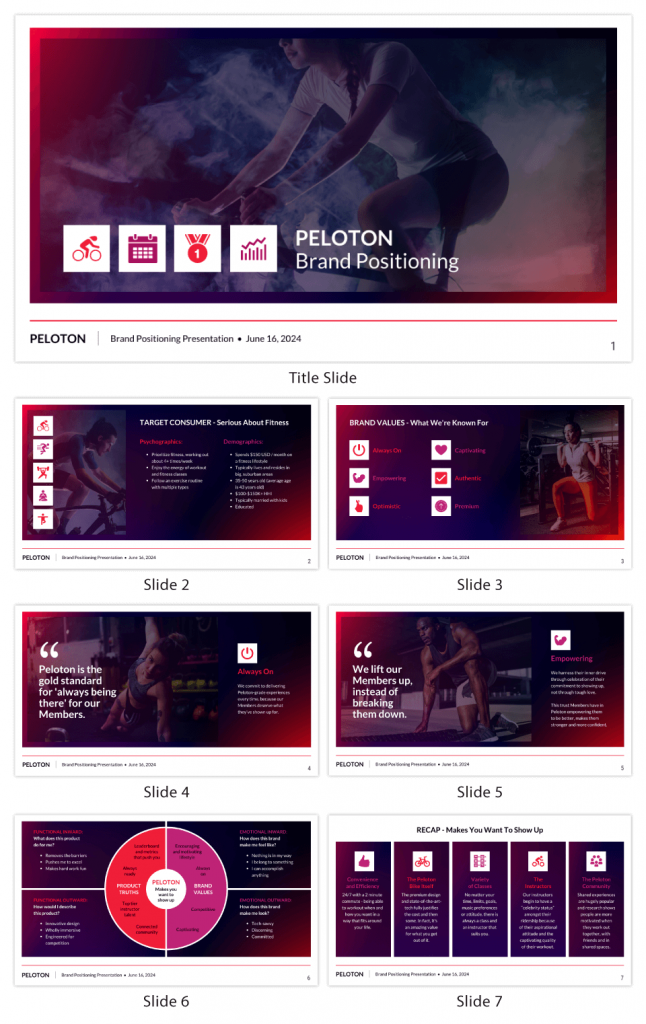
5. The memorable statistic showcase
Spice things up with a series of surprising or intriguing statistics, presented with attention-grabbing visual aids. Summarize your main points using these impactful stats to ensure the audience remembers and grasps the significance of your data, especially when delivering a business presentation or pitch deck presentation .
Transform your data-heavy presentations into engaging presentations using data visualization tools. Venngage’s chart and graph tools help you present information in a digestible and visually appealing manner. Infographics and diagrams can simplify complex concepts while images add a relatable dimension to your presentation.
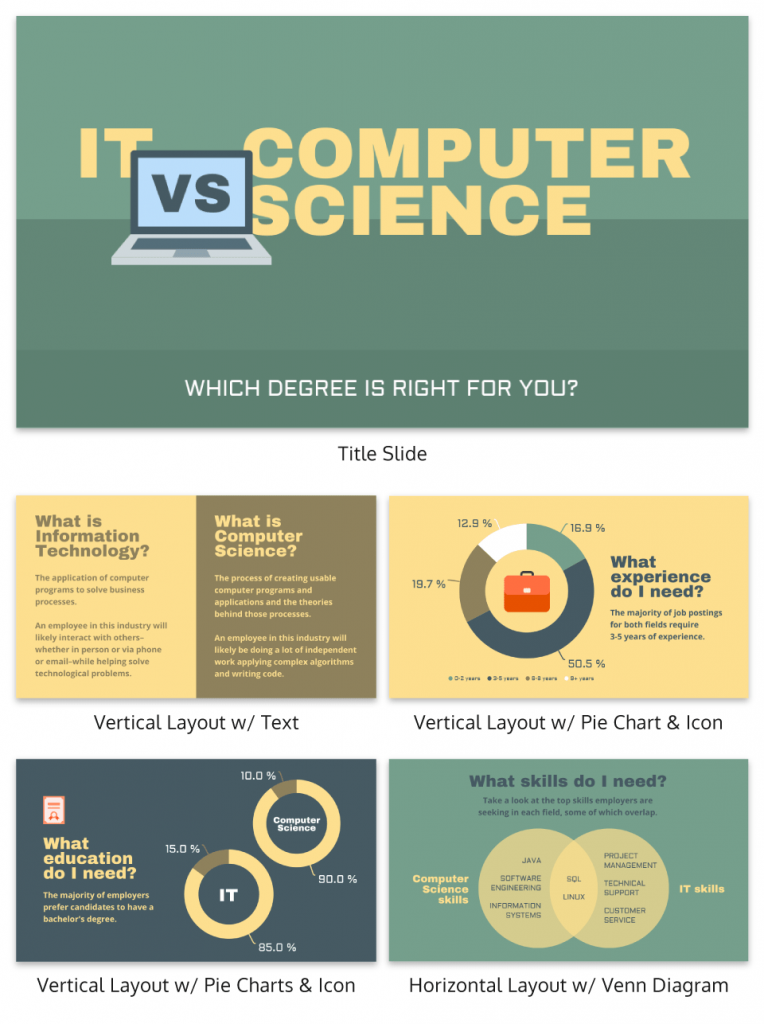
6. The interactive story creation
How about a collaborative story? Work with the audience to create an impromptu tale together. Let them contribute elements and build the story with you. Then, cleverly tie it back to your core message with a creative presentation conclusion.
7. The unexpected guest speaker
Introduce an unexpected guest who shares a unique perspective related to your presentation’s theme. If their story aligns with your message, it’ll surely amp up the audience’s interest and engagement.
8. The thought-provoking prompt
Leave your audience pondering with a thought-provoking question or prompt related to your topic. Encourage reflection and curiosity, sparking a desire to explore the subject further and dig deeper into your message.
9. The empowering call-to-action
Time to inspire action! Craft a powerful call to action that motivates the audience to make a difference. Provide practical steps and resources to support their involvement, empowering them to take part in something meaningful.
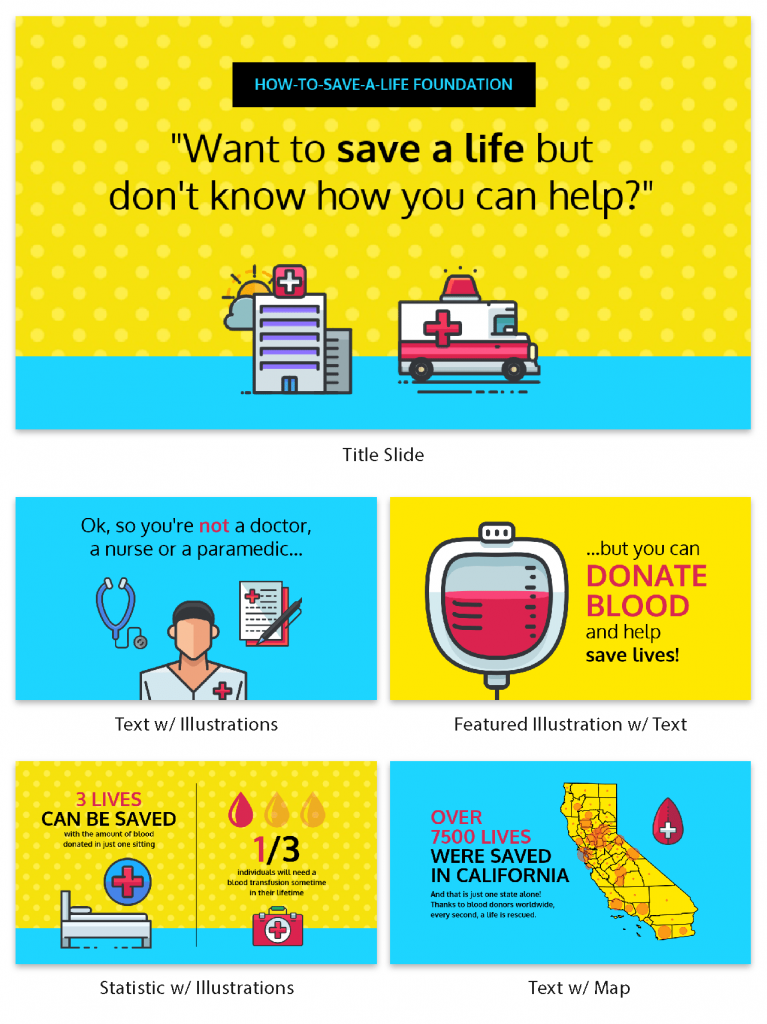
10. The heartfelt expression
End on a warm note by expressing genuine gratitude and appreciation for the audience’s time and attention. Acknowledge their presence and thank them sincerely, leaving a lasting impression of professionalism and warmth.
Not sure where to start? These 12 presentation software might come in handy for creating a good presentation that stands out.
Remember, your closing slides for the presentation is your final opportunity to make a strong impact on your audience. However, the question remains — what exactly should be on the last slide of your presentation? Here are 7 conclusion slide examples to conclude with a high note:
1. Key takeaways
Highlight the main points or key takeaways from your presentation. This reinforces the essential information you want the audience to remember, ensuring they leave with a clear understanding of your message with a well summarized and simple presentation .
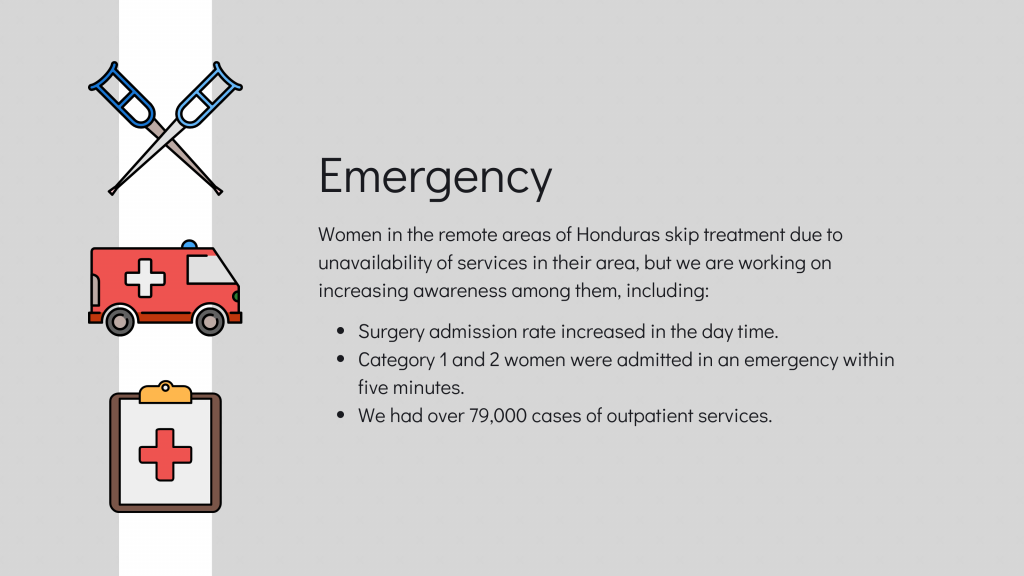
2. Closing statement
Craft a strong closing statement that summarizes the overall message of your presentation and leaves a positive final impression. This concluding remark should be impactful and memorable.
3. Call-to-action
Don’t forget to include a compelling call to action in your final message that motivates the audience to take specific steps after the presentation. Whether it’s signing up for a newsletter, trying a product or conducting further research, a clear call to action can encourage engagement.

4. Contact information
Provide your contact details, such as email address or social media handles. That way, the audience can easily reach out for further inquiries or discussions. Building connections with your audience enhances engagement and opens doors for future opportunities.
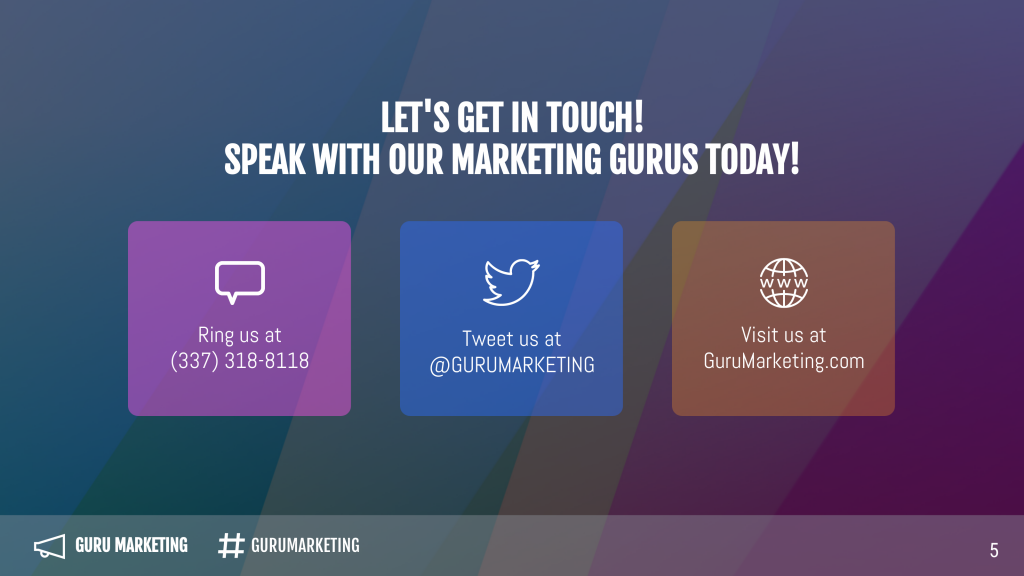
Use impactful visuals or graphics to deliver your presentation effectively and make the conclusion slide visually appealing. Engaging visuals can captivate the audience and help solidify your key points.
Visuals are powerful tools for retention. Use Venngage’s library of icons, images and charts to complement your text. You can easily upload and incorporate your own images or choose from Venngage’s library of stock photos to add depth and relevance to your visuals.
6. Next steps
Outline the recommended next steps for the audience to take after the presentation, guiding them on what actions to pursue. This can be a practical roadmap for implementing your ideas and recommendations.
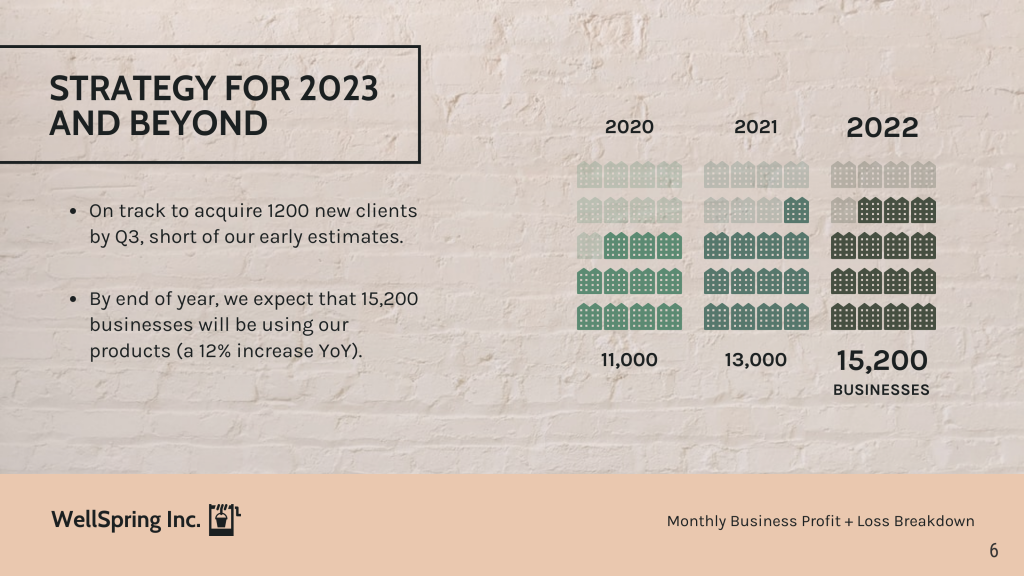
7. Inspirational quote
To leave a lasting impression, consider including a powerful and relevant quote that resonates with the main message of your presentation. Thoughtful quotes can inspire and reinforce the significance of your key points.
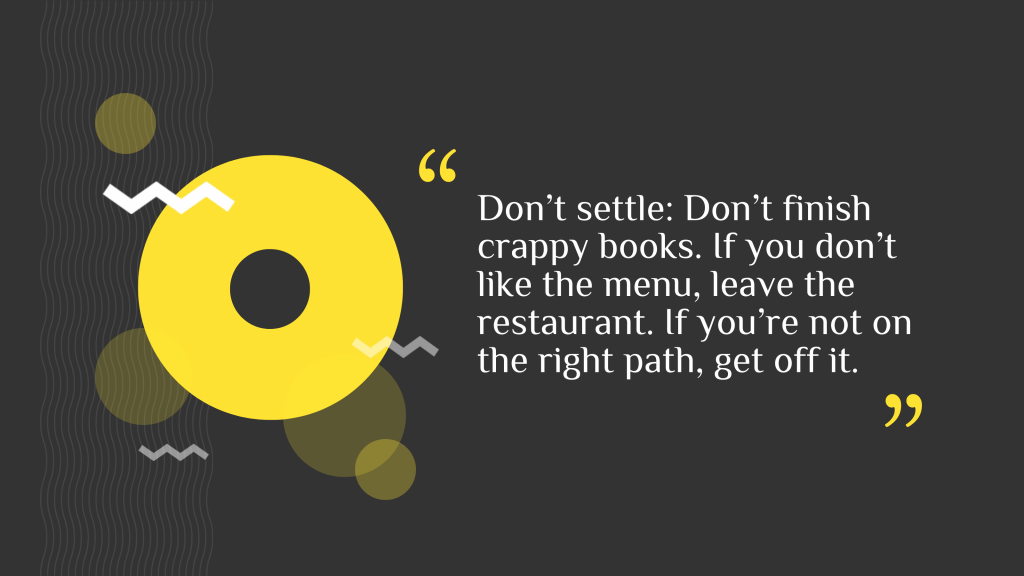
Whether you’re giving an in-person or virtual presentation , a strong wrap-up can boost persuasiveness and ensure that your message resonates and motivates action effectively. Check out our gallery of professional presentation templates to get started.
5 real-life exceptional examples of how to end a presentation
When we talk about crafting an exceptional closing for a presentation, I’m sure you’ll have a million questions — like how do you end a presentation, what do you say at the end of a presentation or even how to say thank you after a presentation.
To get a better idea of how to end a presentation with style — let’s delve into five remarkable real-life examples that offer valuable insights into crafting a conclusion that truly seals the deal:
1. Sheryl Sandberg
In her TED Talk titled “Why We Have Too Few Women Leaders,” Sheryl Sandberg concluded with an impactful call to action, urging men and women to lean in and support gender equality in the workplace. This motivational ending inspired the audience to take action toward a more inclusive world.
2. Elon Musk
Elon Musk often concludes with his vision for the future and how his companies are working towards groundbreaking advancements. His passion and enthusiasm for pushing the boundaries of technology leave the audience inspired and eager to witness the future unfold.
3. Barack Obama
President Obama’s farewell address concluded with an emotional and heartfelt expression of gratitude to the American people. He thanked the audience for their support and encouraged them to stay engaged and uphold the values that define the nation.
4. Brené Brown
In her TED Talk on vulnerability, Brené Brown ended with a powerful quote from Theodore Roosevelt: “It is not the critic who counts… The credit belongs to the man who is actually in the arena.” This quote reinforced her message about the importance of embracing vulnerability and taking risks in life.
5. Malala Yousafzai
In her Nobel Peace Prize acceptance speech, Malala Yousafzai ended with a moving call to action for education and girls’ rights. She inspired the audience to stand up against injustice and to work towards a world where every child has access to education.
For more innovative presentation ideas , turn ordinary slides into captivating experiences with these 15 interactive presentation ideas that will leave your audience begging for more.
So, we talked about how a good presentation usually ends. As you approach the conclusion of your presentation, let’s go through some of the common pitfalls you should avoid that will undermine the impact of your closing:
1. Abrupt endings
To deliver persuasive presentations, don’t leave your audience hanging with an abrupt conclusion. Instead, ensure a smooth transition by providing a clear closing statement or summarizing the key points to leave a lasting impression.
2. New information
You may be wondering — can I introduce new information or ideas in the closing? The answer is no. Resist the urge to introduce new data or facts in the conclusion and stick to reinforcing the main content presented earlier. By introducing new content at the end, you risk overshadowing your main message.
3. Ending with a Q&A session
While Q&A sessions are valuable , don’t conclude your presentation with them. Opt for a strong closing statement or call-to-action instead, leaving the audience with a clear takeaway.
4. Overloading your final slide
Avoid cluttering your final slide with too much information or excessive visuals. Keep it clean, concise and impactful to reinforce your key messages effectively.
5. Forgetting the call-to-action
Most presentations fail to include a compelling call-to-action which can diminish the overall impact of your presentation. To deliver a persuasive presentation, encourage your audience to take specific steps after the talk, driving engagement and follow-through.
6. Ignoring the audience
Make your conclusion audience-centric by connecting with their needs and interests. Avoid making it solely about yourself or your achievements. Instead, focus on how your message benefits the audience.
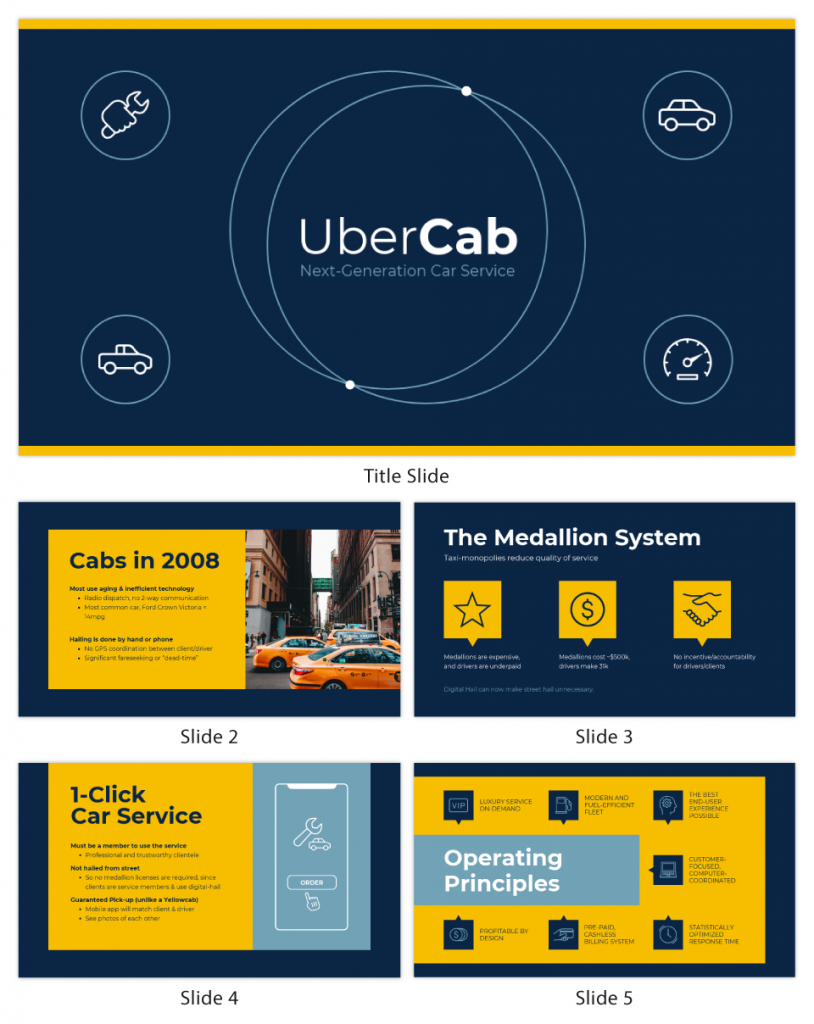
What should be the last slide of a presentation?
The last slide of a presentation should be a conclusion slide, summarizing key takeaways, delivering a strong closing statement and possibly including a call to action.
How do I begin a presentation?
Grabbing the audience’s attention at the very beginning with a compelling opening such as a relevant story, surprising statistic or thought-provoking question. You can even create a game presentation to boost interactivity with your audience. Check out this blog for more ideas on how to start a presentation .
How can I ensure a smooth transition from the body of the presentation to the closing?
To ensure a smooth transition, summarize key points from the body, use transition phrases like “In conclusion,” and revisit the main message introduced at the beginning. Bridge the content discussed to the themes of the closing and consider adjusting tone and pace to signal the transition.
How long should the conclusion of a presentation be?
The conclusion of a presentation should typically be around 5-10% of the total presentation time, keeping it concise and impactful.
Should you say thank you at the end of a presentation?
Yes, saying thank you at the end of a PowerPoint presentation is a courteous way to show appreciation for the audience’s time and attention.
Should I use presentation slides in the concluding part of my talk?
Yes, using presentation slides in the concluding part of your talk can be effective. Use concise slides to summarize key takeaways, reinforce your main points and deliver a strong closing statement. A final presentation slide can enhance the impact of your conclusion and help the audience remember your message.
Should I include a Q&A session at the end of the presentation?
Avoid Q&A sessions in certain situations to ensure a well-structured and impactful conclusion. It helps prevent potential time constraints and disruptions to your carefully crafted ending, ensuring your core message remains the focus without the risk of unanswered or off-topic questions diluting the presentation’s impact.
Is it appropriate to use humor in the closing of a presentation?
Using humor in the closing of a presentation can be appropriate if it aligns with your content and audience as it can leave a positive and memorable impression. However, it’s essential to use humor carefully and avoid inappropriate or offensive jokes.
How do I manage nervousness during the closing of a presentation?
To manage nervousness during the closing, focus on your key points and the main message you want to convey. Take deep breaths to calm your nerves, maintain eye contact and remind yourself that you’re sharing valuable insights to enhance your presentation skills.
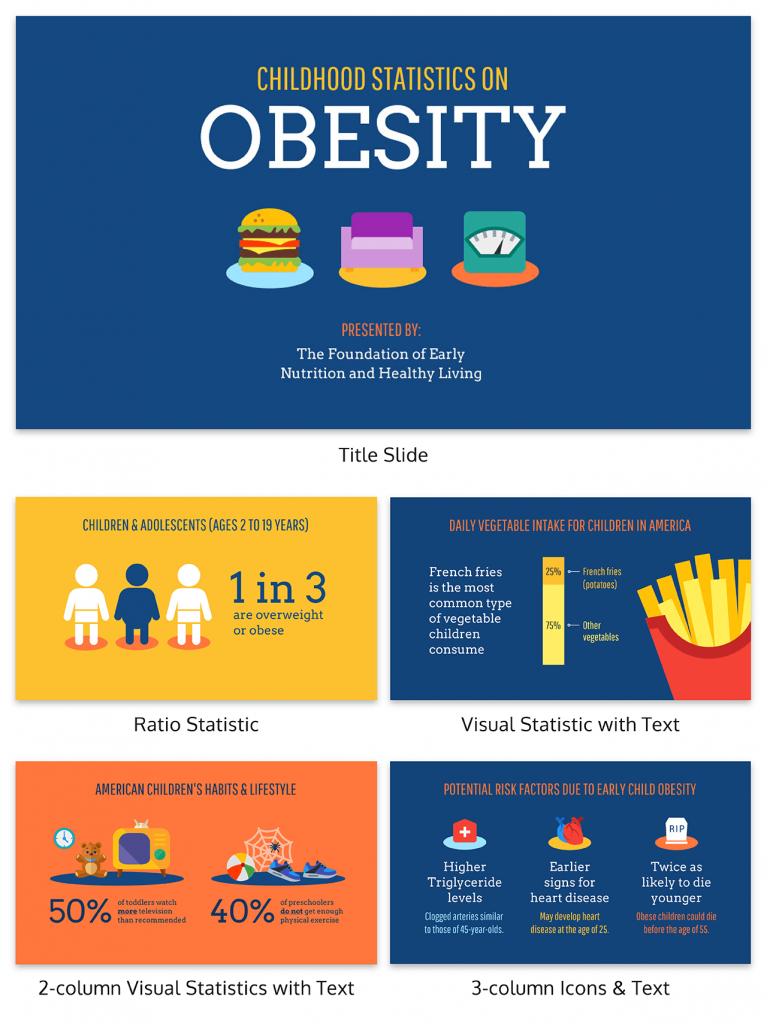
Creating a memorable presentation is a blend of engaging content and visually captivating design. With Venngage, you can transform your ideas into a dynamic and unforgettable presentation in just 5 easy steps:
- Choose a template from Venngage’s library: Pick a visually appealing template that fits your presentation’s theme and audience, making it easy to get started with a professional look.
- Craft a compelling story or outline: Organize your content into a clear and coherent narrative or outline the key points to engage your audience and make the information easy to follow.
- Customize design and visuals: Tailor the template with your brand colors, fonts and captivating visuals like images and icons, enhancing your presentation’s visual appeal and uniqueness. You can also use an eye-catching presentation background to elevate your visual content.
- Incorporate impactful quotes or inspiring elements: Include powerful quotes or elements that resonate with your message, evoking emotions and leaving a lasting impression on your audience members
- Utilize data visualization for clarity: Present data and statistics effectively with Venngage’s charts, graphs and infographics, simplifying complex information for better comprehension.
Additionally, Venngage’s real-time collaboration tools allow you to seamlessly collaborate with team members to elevate your presentation creation process to a whole new level. Use comments and annotations to provide feedback on each other’s work and refine ideas as a group, ensuring a comprehensive and well-rounded presentation.
Well, there you have it—the secrets of how to conclude a presentation. From summarizing your key message to delivering a compelling call to action, you’re now armed with a toolkit of techniques that’ll leave your audience in awe.
Now go ahead, wrap it up like a pro and leave that lasting impression that sets you apart as a presenter who knows how to captivate, inspire and truly make a mark.
Discover popular designs

Infographic maker

Brochure maker

White paper online

Newsletter creator

Flyer maker

Timeline maker

Letterhead maker

Mind map maker

Ebook maker
Home Blog Presentation Ideas Key Insights on How To End a Presentation Effectively
Key Insights on How To End a Presentation Effectively

A piece of research by Ipsos Corporate Firm titled “Last Impressions Also Count” argues that “our memories can be governed more by how an experience ends than how it begins .” A lasting final impression can be critical to any presentation, especially as it makes our presentation goals more attainable. We’re covering how to end a presentation , as it can certainly come through as an earned skill or a craft tailored with years of experience. Yet, we can also argue that performing exceptionally in a presentation is conducting the proper research. So, here’s vital information to help out with the task.
This article goes over popular presentation types; it gives suggestions, defines the benefits and examples of different speech closing approaches, and lines all this information up following each presentation purpose.
We also included references to industry leaders towards the end, hoping a few real-life examples can help you gain valuable insight. Learn from noted speakers and consultants as you resort to SlideModel’s latest presentation templates for your efforts. We’re working together on more successful presentation endings that make a difference!
Table of Content
A presentation’s end is not a recap
The benefits of ending a presentation uniquely, the power of closing in persuasive presentations, informative presentations: the kind set out to convey, call to action presentations: trigger actions or kickoff initiatives, a final word on cta presentations, real-life examples of how to end a presentation, succeeding with an effective presentation’s ending.
We need to debunk a widespread myth to start. That’s why the ending of the presentation calls for an appealing action or content beyond just restating information that the speaker already provided.
A presentation’s end is not a summary of data already given to our audience. On the contrary, a wrap-up is a perfect time to provide meaningful and valuable facts that trigger the desired response we seek from our audience. Just as important as knowing how to start a presentation , your skills on how to end a PowerPoint presentation will make a difference in the presentation’s performance.
Effective ways to end a presentation stem from truly seeking to accomplish – and excel – at reaching a presentation’s primary objective. And what are the benefits of that?
Considering the benefits of each closing approach, think about the great satisfaction that comes from giving an excellent presentation that ends well. We all intuitively rejoice in that success, regardless of the kind of audience we face.
That feeling of achievement, when an ending feels right, is not a minor element, and it’s the engine that should drive our best efforts forward. Going for the most recommended way of ending a presentation according to its primary goal and presentation type is one way to ensure we achieve our purpose.
The main benefit of cleverly unlocking the secret to presentation success is getting the ball rolling on what we set ourselves to achieve . Whether that’s securing a funding round, delivering a final project, presenting a quarterly business review, or other goals; there is no possible way in which handling the best presentation-ending approaches fails to add to making a skilled presenter, improving a brand or business, or positively stirring any academic or commercial context.
The best part of mastering these skills is the ability to benefit from all of the above time and time again; for any project, idea, or need moving forward.
How to end a PowerPoint Presentation?
PowerPoint Presentations differ by dimensions. They vary not only tied to the diverse reasons people present, but they also separate themselves from one another according to: a- use, b- context, c- industry, and d- purpose.
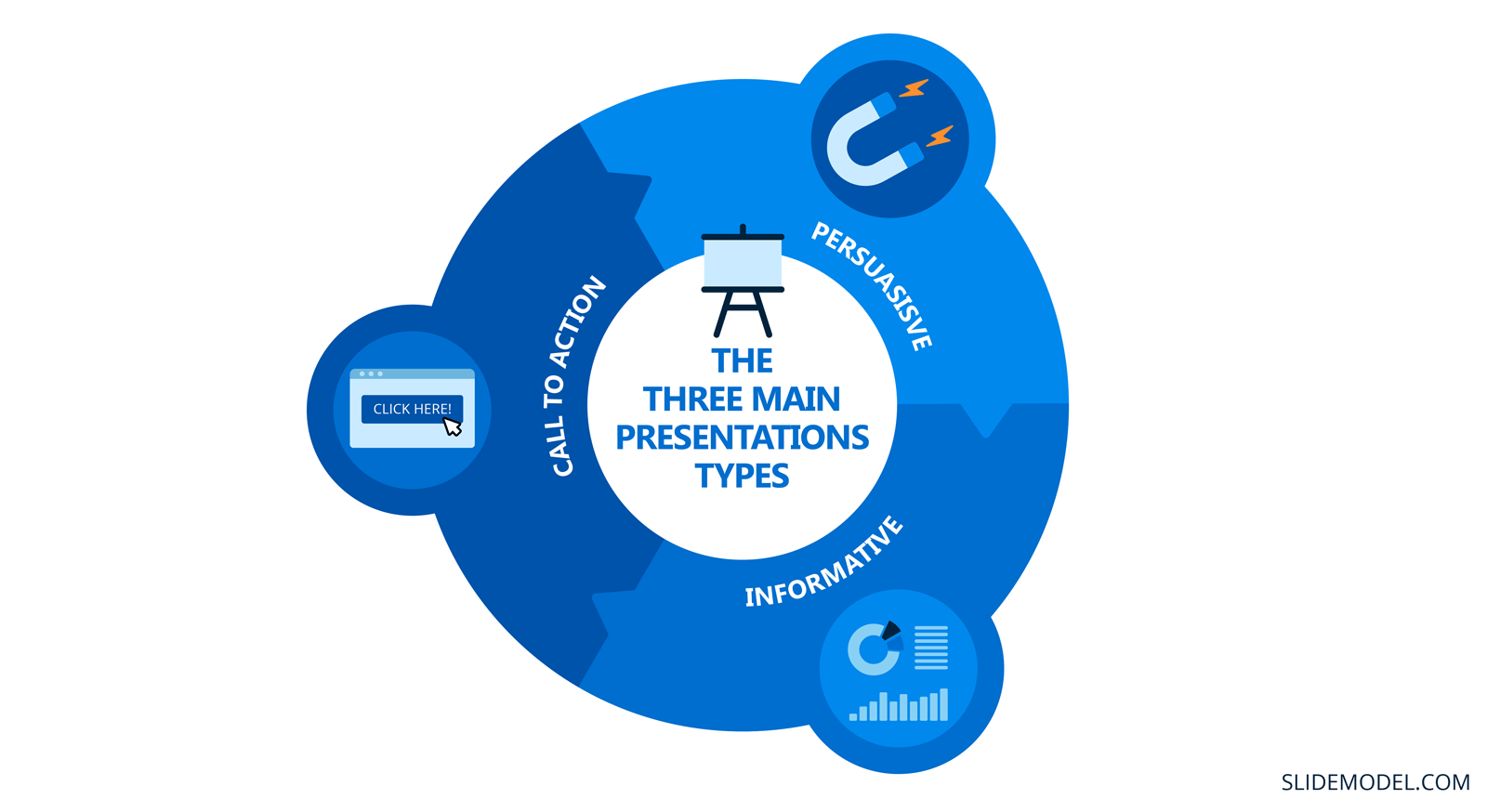
We’re focusing on three different types of presentation pillars, which are:
- Informative
- Calls to action
As you can guess, the speaker’s intent varies throughout these types. Yet, there’s much more to each! Let’s go over each type’s diverse options with examples.
In 2009, “The New Rules of Persuasion,” a journal article published by The Royal Society for Arts, Manufactures, and Commerce, determined that commercial persuasion was missing “the ability to think clearly about behavior goals and the mindset of starting small and growing what works.” Incorporating these thoughts is still equally valid in persuasive presentations today.
What hasn’t changed since, however, is this society’s good reminder that “the potential to persuade is in the hands of millions.” As they stated in that publication, “ordinary people sitting in dorm rooms and garages can compete against the biggest brands and the richest companies.” The proven reality behind that concept can be pretty inspiring.
According to this source, “ the first critical step in designing for persuasion is to select an appropriate target behavior. ” And, for behavior to occur, in their opinion, “three elements must converge at the same moment […]: Motivation , Ability, and Trigger .” This theory signals a person is motivated through sensation, anticipation, or belonging when they can perform a particular action. This concept is at the backbone of setting the correct trigger to allow a group of people to react a certain way.
The above is of utmost importance as we seek to gear persuasive efforts. The more insight we get on the matter, the easier it is to define the precise actions that will effectively trigger a certainly required response – in any scenario.
Here are options on how to deliver a final punch in a persuasive presentation during different types of objectives:
Investment presentations
Whenever you seek funding, that need should be expressly clear during a pitch. Investors need to know what’s in it for them on a given investment. Highlight what interests them, and add what the return for the investor is. Mention dividends, equity, or the return method selected, for instance. Your final ask slide should show the exact amount you’re looking for during this funding stage.
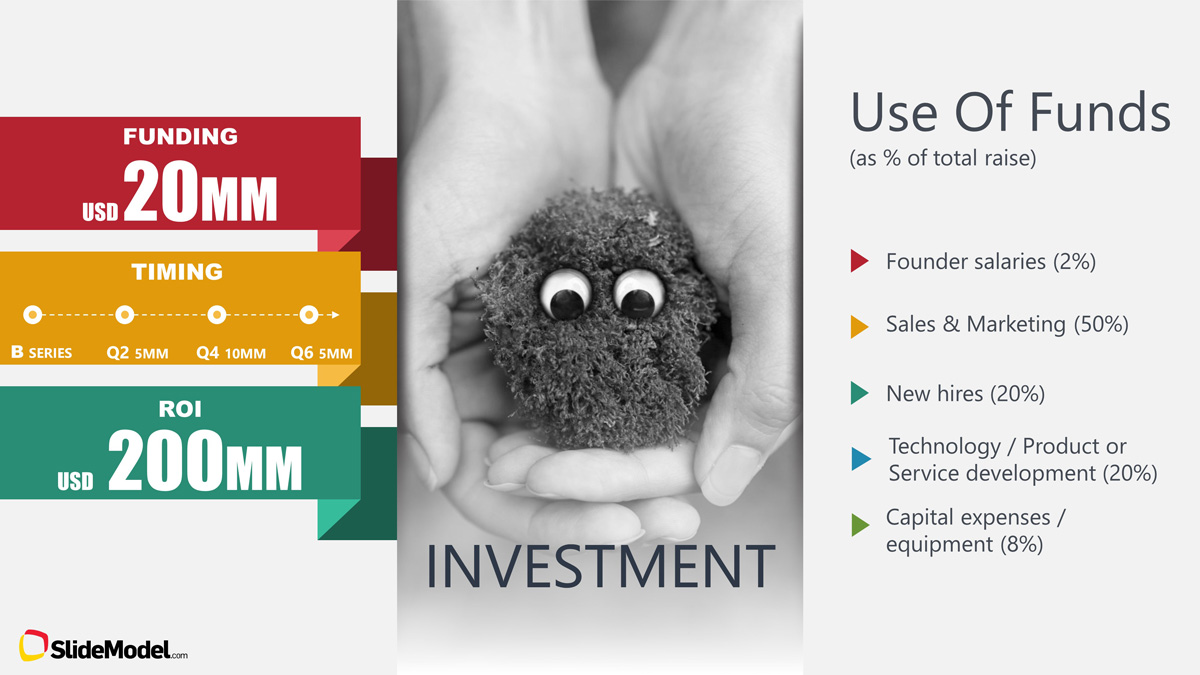
Throughout, explain what an investor’s return on investment (ROI) will be. And make sure you do so according to provable calculations. Here, the goal is to display current figures and future opportunities in your speech.
You mustn’t make up this data. In this setting, presenters are naturally assessed by their ability to stay within real options fully supported by proven and concise reliable information.
Focus on showing an ability to execute and accomplish expected growth. Also, be precise on how you’re using any trusted funds . For that, mention where they’ll be allocated and how you foresee revenue after investing the funds in your idea, product, or company.
Pitch Presentations
Pitches are also another form of persuasive presentation. Presenters are expected to wow in new ways with them, be engaging in their approach, and deliver valuable, market-impacting data. When someone delivers a pitch, it seeks a particular kind of action in return from the audience. Being fully engaged towards a presentation’s end is crucial.
Make sure you give the presentation’s end a Call to Action slide in sales. You’re certainly looking to maximize conversion rates here. Bluntly invite your audience to purchase the product or service you’re selling, and doing so is fair in this context. For example, you can add a QR code or even include an old-fashioned Contact Us button. To generate the QR code, you can use a QR code generator .
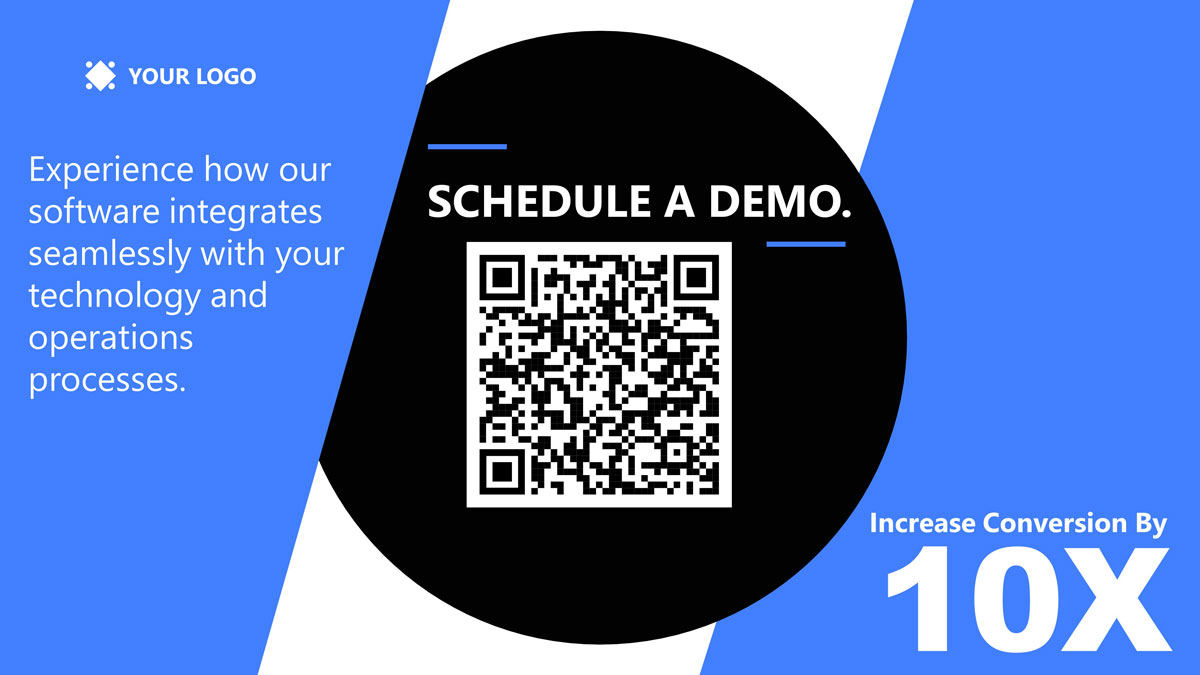
According to Sage Publishing , there are “four types of informative speeches[, which] are definition speeches, demonstration speeches, explanatory speeches, and descriptive speeches.” In business, descriptive speeches are the most common. When we transport these more specifically to the art of presenting, we can think of project presentations, quarterly business reviews, and product launches. In education, the definition and demonstration speeches are the norm, we can think in lectures and research presentations respectively.
As their name suggests, these presentations are meant to inform our audiences of specific content. Or, as SAGE Flex for Public Speaking puts it in a document about these kinds of speeches, “the speaker’s general goal is always to inform—or teach—the audience by offering interesting information about a topic in a way that helps the audience remember what they’ve heard.” Remember that as much as possible, you’re looking to, in Sage’s words, give out “information about a topic in a way that’s easy to understand and memorable.” Let’s see how we manage that in the most common informative presentation scenarios mentioned above.
Project Presentations
For projects, presentations should end with an action plan . Ensure the project can keep moving forward after the presentation. The best with these conclusion slides is to define who is responsible for which tasks and the expected date of completion. Aim to do so clearly, so that there are no remaining doubts about stakeholders and duties when the presentation ends. In other words, seek commitment from the team, before stepping out of these meetings. It should be clear to your audience what’s expected next of them.
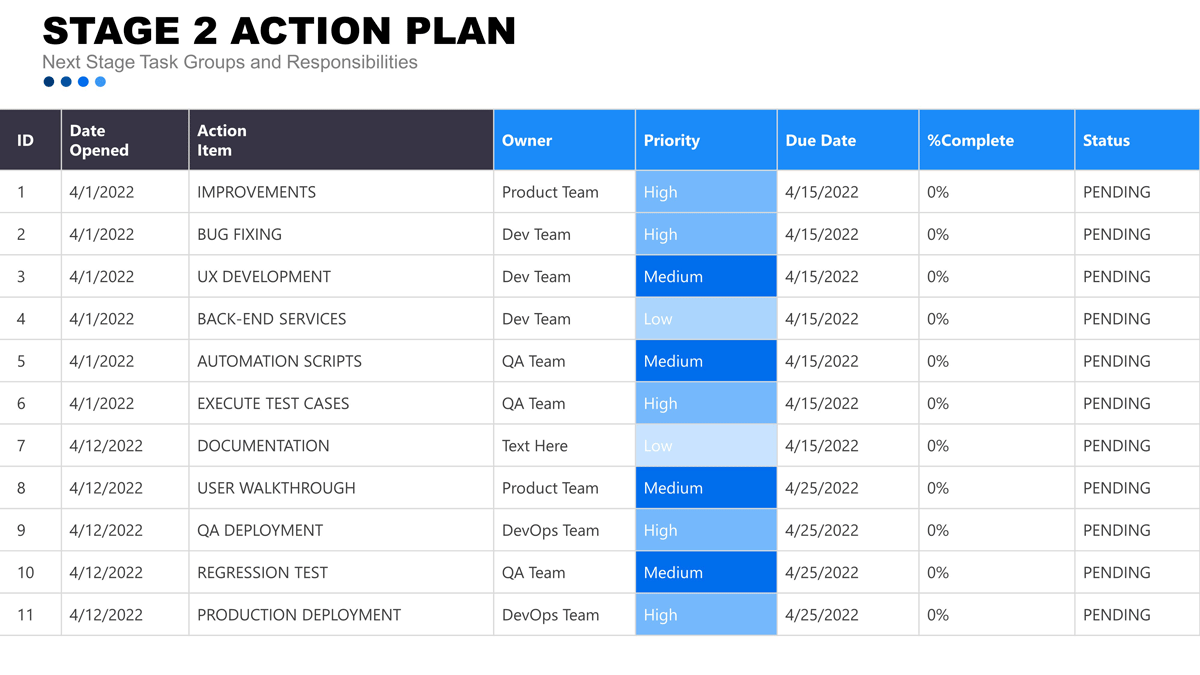
As an addition, sum up, your problem, solution, and benefits of this project as part of your final message.
Quarterly Business Review Presentations (QBR)
By the end of the presentation type, you would’ve naturally gone over everything that happened during a specific quarter. Therefore, make sure you end this quarterly review with clear objectives on what’s to come for the following term. Be specific on what’s to come.
In doing so, set figures you hope to reach. Give out numbers and be precise in this practice. Having a clear action plan to address new or continuing goals is crucial in this aspect for a recent quarter’s start out of your QBR. Otherwise, we’re missing out on a true QBR’s purpose. According to Gainsight , “If you go into a QBR without a concrete set of goals and a pathway to achieve them, you’ll only waste everyone’s time. You won’t improve the value of your product or services for your customers. You won’t bolster your company’s image in the eyes of key stakeholders and decision-makers. You won’t better understand your client’s business objectives.” As they put it, “Lock in solid goals for the next quarter (or until your next QBR)” and secure your way forward as the last step in presenting these kinds of data. Visit our guide on How to Write an Effective Quarterly Business Review for further tips on this type of presentation.
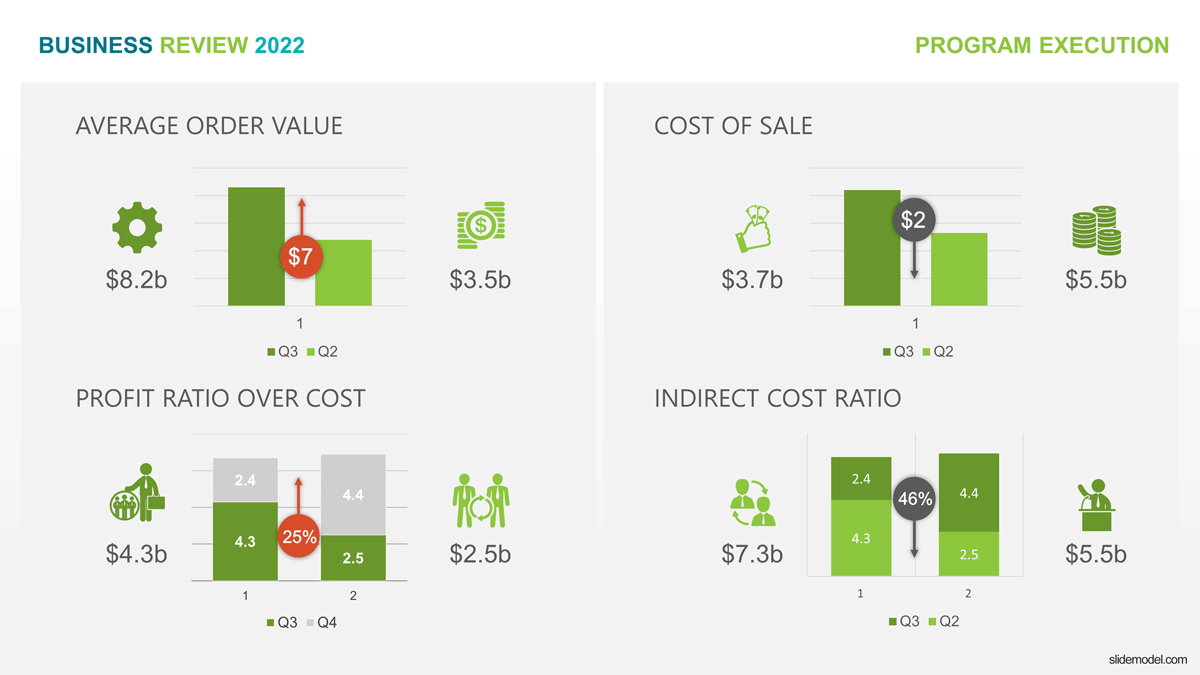
Research presentations
Your research has come this far! It’s time to close it off with an executive summary.
Include the hypothesis, thesis, and conclusion towards the presentation’s end.
How do you get the audience to recall the main points of all this work? Let this guiding question answer what to insert in your final slide, but seek to reinforce your main findings, key concepts, or valuable insight as much as possible. Support your statements where necessary.
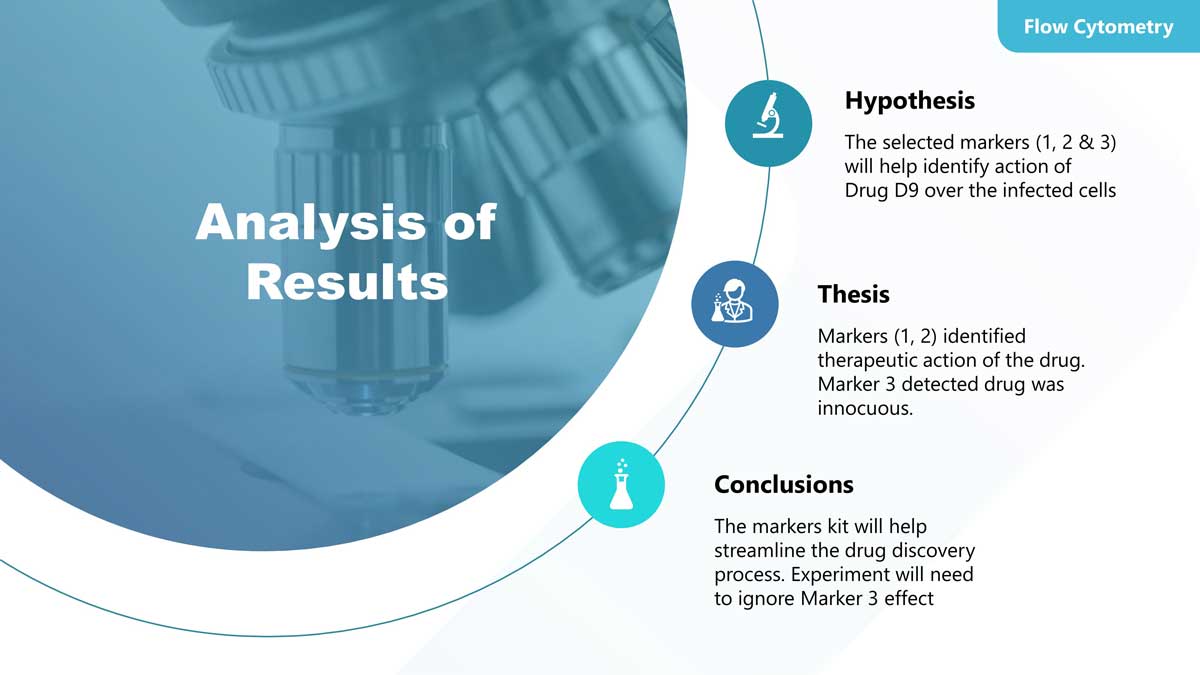
Most commonly, researchers end with credits to the collaborating teams. Consider your main messages for the audience to take home. And tie those with the hypothesis as much as possible.
Product Launch Presentation
Quite simply, please take out the product launch’s roadmap and make it visible for your presentation’s end in this case.
It’s ideal for product launch presentations to stir conversations that get a product moving. Please don’t stick to showcasing the product, but build a narrative around it.
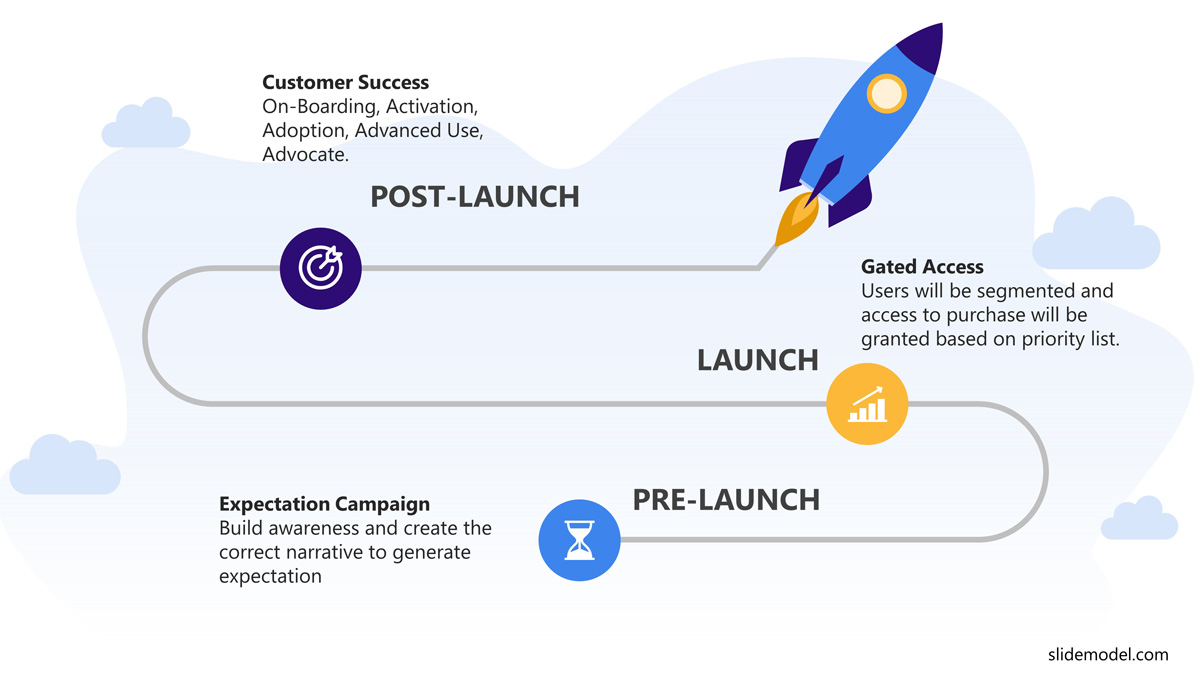
Steve Jobs’ example at the bottom might help guide you with ideas on how to go around this. A key factor is how Apple presentations were based on a precise mix of cutting-edge, revolutionary means of working with technology advancements and a simple human touch.
Elon Musk’s principles are similar. People’s ambitions and dreams are a natural part of that final invitation for consumers or viewers to take action. What will get your audience talking? Seek to make them react.
Lecture for specific classes / educational presentation
When it comes to academic settings, it’s helpful to summarize key points of a presentation while leaving room for questions and answers.
If you’re facing a periodic encounter in a class environment, let students know what’s coming for the next term. For instance, you could title that section “What’s coming next class,” or be creative about how you call for your student body’s attention every time you go over pending items.
If you need to leave homework, list what tasks need to be completed by the audience for the next class.
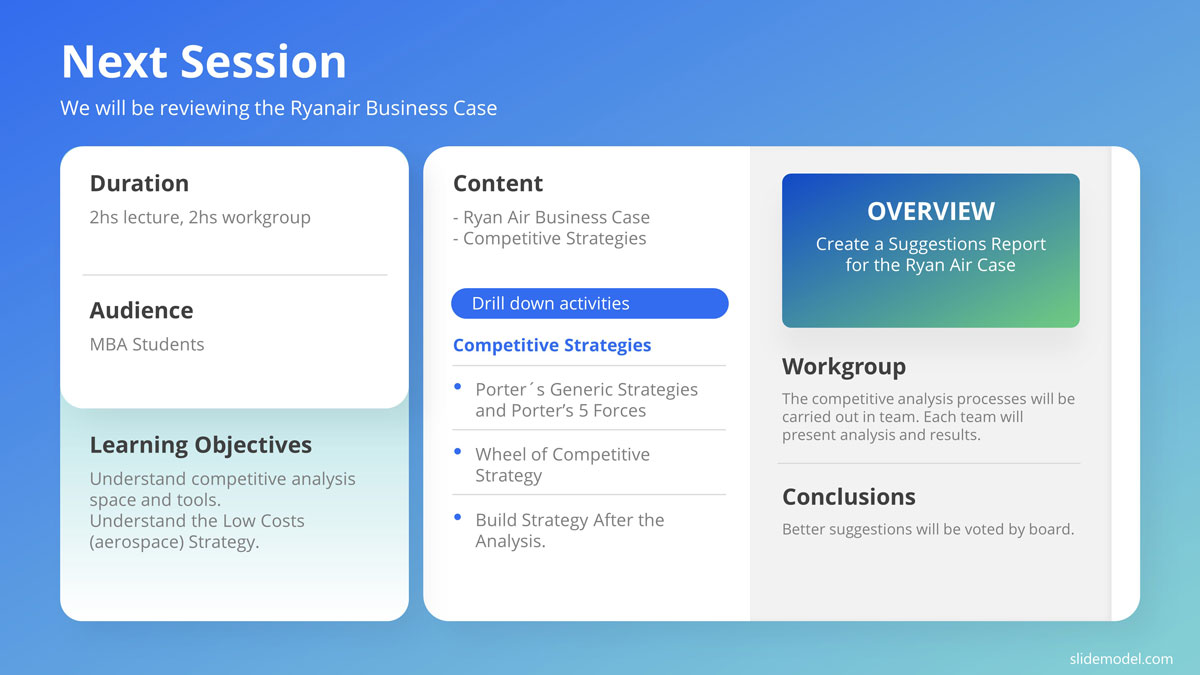
Another option is to jot down the main learnings from this session or inspire students to come back for the following class with a list of exciting topics. There’s more room for play in this setting than in the others we’ve described thus far.
Harvard Business Review (HBR) concisely describes the need at the end of a call to action presentation. HBR’s direct piece of advice is that you should “use the last few moments of your presentation to clarify what action [an audience] can take to show their support.” And what’s key to HBR is that you “Also mention your timeframe” as, for them, “a deadline can help to urge [the audience] into action.” Having a clear view of specific timelines is always fruitful for a better grasp of action items.
In her book Resonate, Nancy Duarte explains that “No matter how engaging your presentation may be, no audience will act unless you describe a reward that makes it worthwhile. You must clearly articulate the ultimate gain for the audience […] If your call to action asks them to sacrifice their time, money, or ideals, you must be very clear about the payoff.”
Business plan presentations
Here, we need to speak of two different presentation types, one is a traditional approach , and the second is what we call a lean approach .
For the traditional business plan presentation, display each internal area call to action. Think of Marketing, Operations, HR, and even budgets as you do so. Your PowerPoint end slide should include the rewards for each of the areas. For example, which will benefit each area when achieving the targets, or how will the company reward its employees when attaining specific goals? Communicating the reward will help each of the responsible entities to trigger action.
On the other hand, for your lean business plan, consider a business model canvas to bring your presentation to an end.
Job interview presentations
You can undoubtedly feel tons of pressure asking for a specific position. For a great chance of getting that new job, consider closing your case with a 30 60 90 day plan as a particular hiring date. The employer will see its reward in each of the 30-day milestones.
Also, show off what you’ll bring to the role and how you’ll benefit the company in that period, specifically. Again, to a certain extent, we’re seeking to impress by being offered a position. Your differentiator can help as a wrap-up statement in this case.
Business Model Presentation
The pivot business model fits perfectly here for a presentation’s grand finale. The reward is simple; the business validated a hypothesis, and a new approach has been defined.
Though the setting can be stressful around business model presentations, you can see this as simply letting executives know what the following line of steps will need to be for the business model to be scalable and viable. Take some tension off this purpose by focusing on actions needed moving forward.
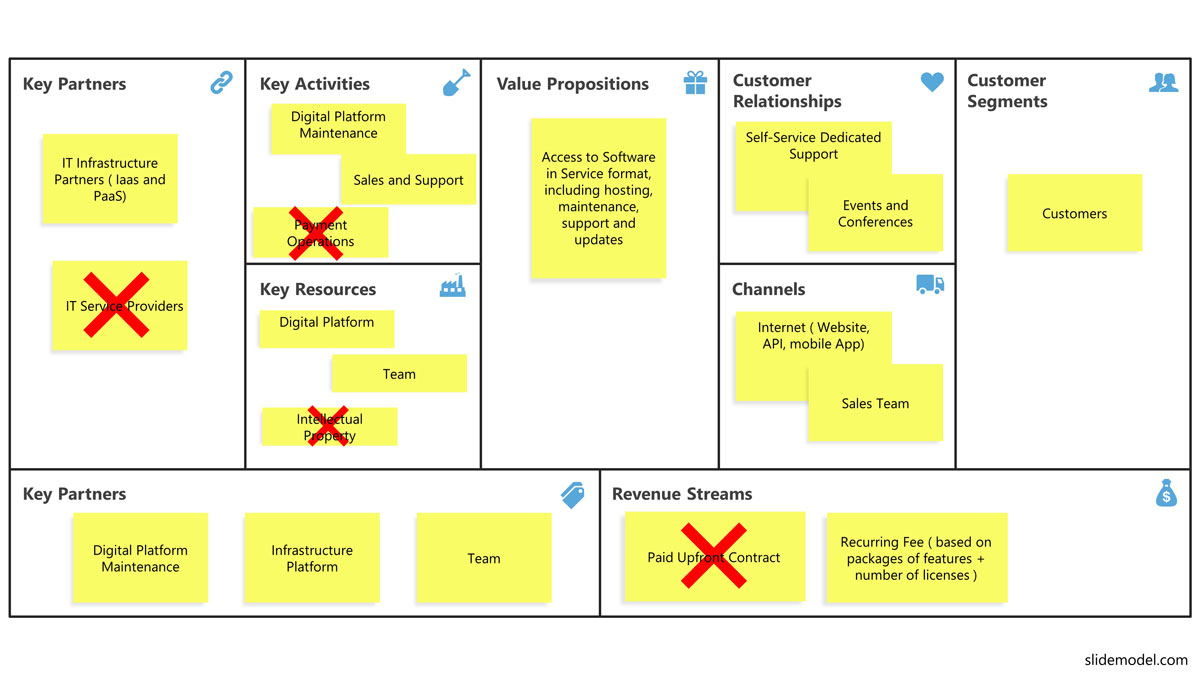
Your call to action will center around a clear business model canvas pivot here.
We need to work hard at ending presentations with clear and concise calls to action (CTA) and dare be creative as we’re doing so! Suppose you can manage to give out a specific CTA in a way that’s imaginative, appealing, and even innovative. In that case, you’ll be showing off priceless and unique creative skills that get people talking for years!
Think of Bill Gates’ releasing mosquitoes in a TED Talk on malaria, for example. He went that far to get his CTA across. Maybe that’s a bit too bold, but there’s also no limit!
Now that we can rely on a broader understanding of how to conclude a presentation successfully, we’ll top this summary off with real-life examples of great endings to famous speakers’ presentations. These people have done a stellar job at ending their presentations in every case.
We’re also going back to our three main pillars to focus on a practical example for each. You’ll find an excellent example for an informative speech, a persuasive pitch, and a successful investor pitch deck. We’re also expanding on the last item for a guiding idea on ending a pitch directly from Reid Hoffman.
Informational Presentation: A product launch of a phone reinvention
The first is what’s been titled “the best product launch ever.” We’re going back to the iconic Steve Jobs’ iPhone launch dated more than a decade ago. You can see how to end a presentation with a quote in this example effectively. The quote resonates with the whole presentation purpose, which was not “selling” the iPhone as a “hardware phone” but as the “hardware” platform for “great software.” Closing with a quote from a famous personality that summarizes the idea was a clever move.
Little words are needed to introduce Steve Jobs as a great speaker who effectively moved the business forward every time he went up on a stage to present a new product. No one has ever been so revolutionary with a calm business spirit that has changed the world!
Persuasive Presentation: The best pitch deck ever
We’re giving you the perfect example of a great pitch deck for a persuasive kind of presentation.
Here’s TechCrunch’s gallery on Uber’s first pitch deck .
As you can see, the last slide doesn’t just report the status to date on their services; it also accounts for the following steps moving forward with a precise date scheduled.
Check the deck out for a clearer idea of wrapping up a persuasive business presentation.
Call to Action Presentation: LinkedIn’s Series B pitch deck by Reid Hoffman
As mentioned before, here’s an expanded final sendoff! Reid Hoffman is an established entrepreneur. As a venture capitalist and author, he’s earned quite a remarkable record in his career, acting as co-founder and executive chairman of LinkedIn.
We’re highlighting LinkedIn’s series B pitch deck to Greylock Partners mainly because these slides managed to raise a $10 M funding round. Yet, moreover, we’re doing so because this deck is known to be well-rounded and overall highly successful.
LinkedIn may be famous now for what it does, but back in 2004, when this deck made a difference, the company wasn’t a leader in a market with lots of attention. As Reid highlights on his website, they had no substantial organic growth or revenue. Yet, they still managed to raise a considerable amount.
In Reid’s words for his last slide, “The reason we reused this slide from the beginning of the presentation was to indicate the end of presentation while returning to the high line of conceptualizing the business and reminding investors of the value proposition.” In his vision, “You should end on a slide that you want people to be paying attention to,” which he has tied with the recommendation that you “close with your investment thesis,” as well. A final note from him on this last slide of LinkedIn’s winning pitch is that “the end is when you should return to the most fundamental topic to discuss with your investors.” Quite a wrap-up from a stellar VC! Follow the linked site above to read more on the rest of his ending slides if you haven’t ever done so already.
The suggestions above are practical and proven ways to end a presentation effectively. Yet, remember, the real secret is knowing your audience so well you’ll learn how to grasp their attention for your production in the first place.
Focus on the bigger picture and add content to your conclusion slide that’s cohesive to your entire presentation. And then aim to make a lasting final impression that will secure what you need. There is a myriad of ways to achieve that and seek the perfect-suiting one.
Also, be bold if the area calls for it. As you see above, there is no shame, but an actual need to state the precise funding amount you need to make it through a specific stage of funding. Exercise whatever tools you have at your disposal to get the required attention.
Also, being sure about whatever decision you make will only make this an easier road to travel. If your head is transparent about what’s needed, you’ll be more confident to make a convincing case that points your audience in the right direction.
Check out our step-by-step guide on how to make a presentation .
Ending a presentation effectively is crucial as it leaves a lasting impression on the audience, reinforces the key message, and significantly influences the audience’s perception and actions following the presentation.
No, instead of simply recapping, use the end of your presentation to provide meaningful and valuable facts that trigger the desired response from your audience. The ending should reinforce your main message and encourage action.
A strong presentation ending can increase engagement, ensure your key points are remembered, motivate the audience to take action and leave a positive impression that enhances your credibility and effectiveness as a presenter.
For persuasive presentations, ensure you highlight the benefits for the audience, such as return on investment for investors or clear actions for a pitch. Focus on motivation, ability, and triggers to encourage the desired behavior.
End informative presentations with a clear summary of the key points, an action plan, or specific goals for the future. For example, project presentations should end with an action plan, and quarterly business reviews should conclude with objectives for the next term.
End a CTA presentation by clearly stating what action you want the audience to take and by providing a specific timeframe. Highlight the benefits of taking action and make the request compelling and urgent.
A CTA slide encourages the audience to take specific actions, such as contacting you, purchasing, or supporting a project. Make it clear, compelling, and actionable.
Use creative and engaging methods such as storytelling, quotes, visual aids, or a compelling call to action. Tailor your ending to your audience’s needs and interests to ensure it resonates with them.
Avoid being vague or indecisive. Do not merely recap the presentation. Instead, provide a clear, compelling, actionable conclusion reinforcing your main message.
Understand your audience, clearly define your presentation goals, and plan your ending to align with those goals. Practice delivering your conclusion to ensure it’s impactful and confident.
Like this article? Please share
Business, Business Development, Business PowerPoint Templates, Business Presentations, Corporate Presentations, PowerPoint Tips, Presentation Approaches Filed under Presentation Ideas
Related Articles
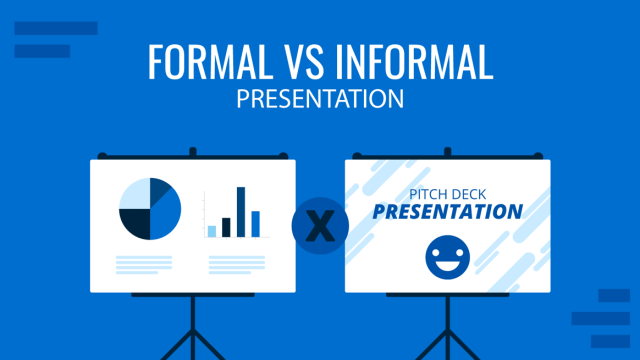
Filed under Presentation Ideas • October 23rd, 2024
Formal vs Informal Presentation: Understanding the Differences
Learn the differences between formal and informal presentations and how to transition smoothly. PPT templates and tips here!
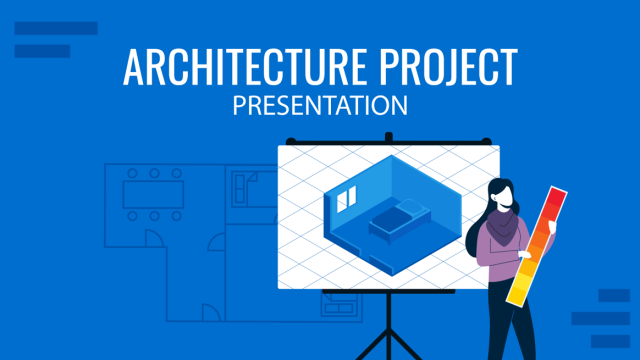
Filed under Design • October 17th, 2024
Architecture Project Presentation: Must-Know Secrets for Creative Slides
Impress your audience by mastering the art of architectural project presentations. This detailed guide will give you the insights for this craft.
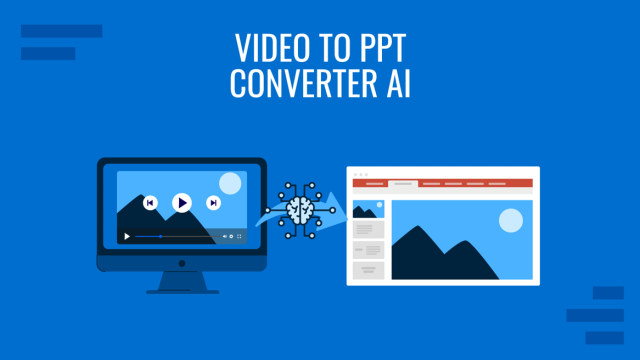
Filed under Design • October 7th, 2024
Video to PPT Converter AI with SlideModel AI
Looking to generate a presentation from a video transcript? Discover why SlideModel AI is the best tool for the task.
Leave a Reply

IMAGES
VIDEO